Wolfenstein Youngblood As An Example of Co-op Shooters
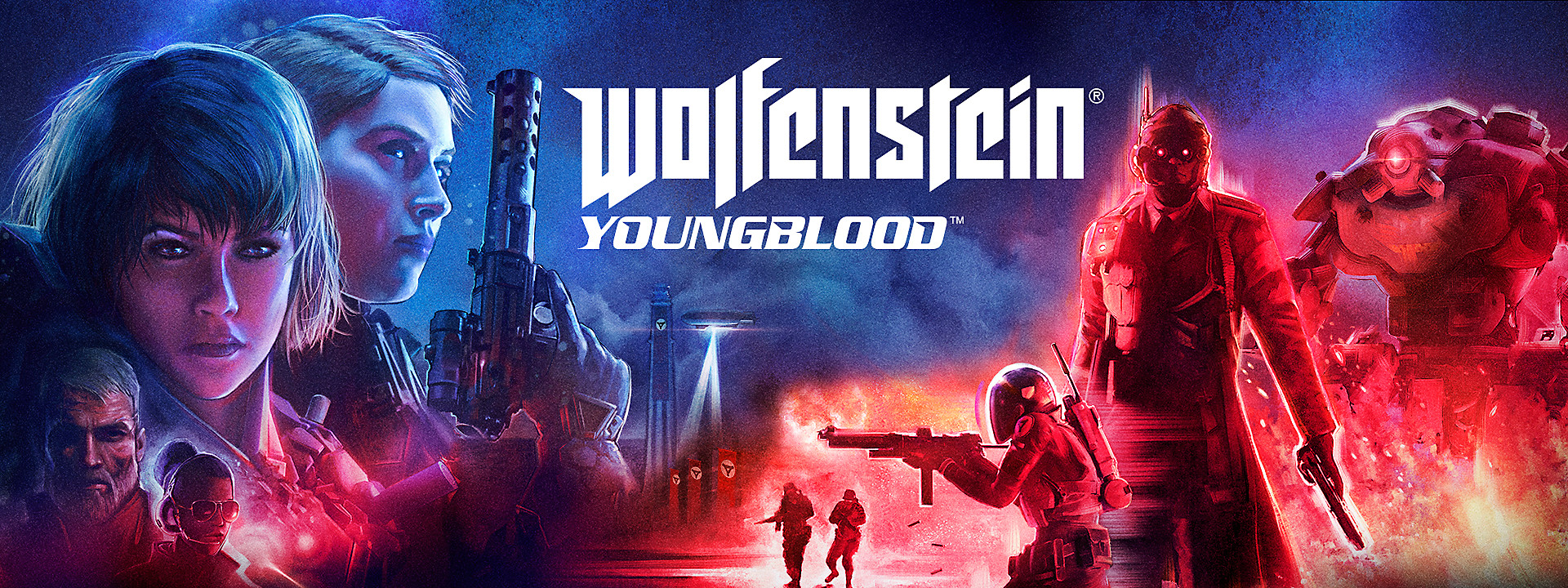
Contents
- Pre-Intro
- Intro
- Limits
- Upgrades
- Classes
- Weapons
- Replayability
- Enemies
- Life Simulation
- Levels
- Hub
- Outro
- Links
PRE-INTRO
It wasn’t a secret, but it suddenly (like a Spanish inquisition) appeared that the MachineGames Wolfenstein series is already 10 years old! Despite its already long history, Wolfenstein's modern look was defined exactly by MachineGames. This is the amazingly edgy tarantinian concept about the oldschool nazi killer, BJ Blazkowicz, that is reawaken in a dystopian future ruled by a Nazi that won the World War 2, so he can fight them again (well, that’s literally the history of a serie!). This concept had been a turning point for a genre reconstruction (for example, this article, this and that can tell about the series being something more that just another shooter). And the alternative history twist allows to rise sharp political questions - would we be drinking the Bavarian beer in case of Nazi reign or our non-aryan skin would become a part of a furniture? With a few story brushstrokes Wolfenstein I-II manage to mark down pretty much the same that 4 seasons of “The Man in the High Castle” did, openly and frankly asking for racism, human rights and language policies.
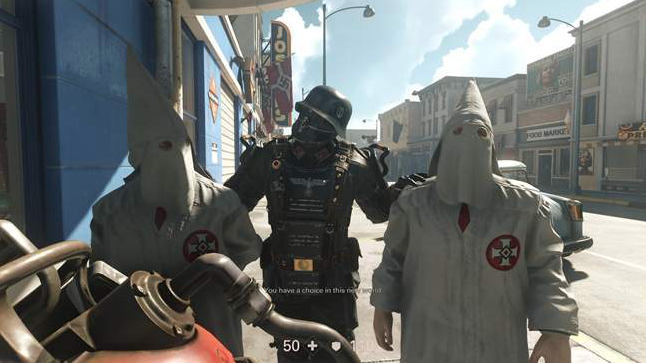
For me, especially touching was the “Change over day” and KKK walking openly in the street. Somewhat reminded me my country Latvia, with the part of the citizens limited in rights based on a fact of correct birth; with Constitution seems to be OK, but with special laws “retconned” to support only one ethnic group; and with having our own “Change over day”, with the destruction of 250 years old russian-language schools culture, denying even private schools despite ⅓ population of Latvia is russian-speaking; with majority believing that they have full rights to dictate how the minority should be living, and denying any dialog option as it’s believed that any opinion going against official government propaganda is a radicalism and it gets harassed by the state security police with kafkian accusations in spying or working in a favor of another state; with ex-legionnaires boldly walking in the streets on March 16th, and getting support from the government high persons, because it believed that fighting Soviets - modern capitalism scarecrow - should indulge all the sins of Nazi collaboration and non-combatants murder in a post-war period; and current anti-Russia public relations should indulge russian-speaking citizen discrimination in Latvia and Estonia, and with EU watching indifferently on its inner human rights problems if the problematic country remains pro-USA - well, I don't know, maybe, it's normal for a European country?.. You know, an enemy of your enemy is not always your friend. It may be a deal with a devil…
Probably that’s why I liked the series and loved destroying the fucking Nazism at least in the virtual world while the real world is slowly sliding into it, getting poorer and meaner thus becoming an easy target for nationalistic movements. Sure, that’s exactly what our small warming up world needs - the militaristic nationalists!
Yes, the last Youngblood looked like a much more commercial project due to a weaker plot and not so charismatic heroines, although their parents' PTSD is clearly traced in their upbringing, but, in general, it is a decent game. But as it was said, don’t fear perfection, you’ll never reach it (c), so I wanted to analyze what could improve the game.
INTRO
Nowadays everyone is experimenting with the inception of Game as a Service concept, so that the player is involved as much as possible, paying for some features, thus giving a game studio the reasons to support the game longer. Id Software with Bethesda are also looking at this scheme, step-by-step adding GaaS mechanics to their games, starting from Quake Champions and continuing with Doom Eternal.
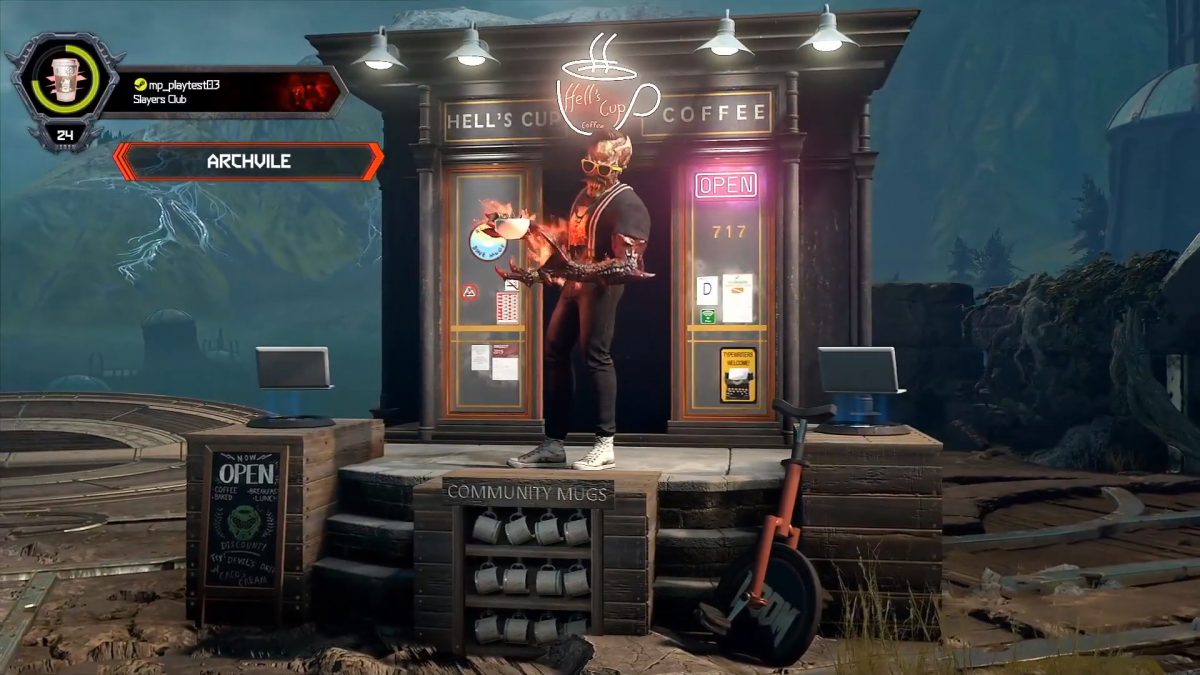
And Wolfenstein Youngblood is one of these steps, a little bit awkward, but quite playable. Besides, a lot of existing mechanics were added by previous Machinegames Wolfenstein series: a Hub, RPG elements, weapon upgrades and replayable missions. And, in general, there is a feeling that the game was initially done for a single-player experience, but in a certain moment somebody has told that Youngblood can be also a cooperative game.
Theoretically, yes, we can’t tell that Wolfenstein cannot into FPS adjacent genres, but practically there is a sense of some unfinished, let’s say unedged, mechanics, probably because of the lesser budget. In the end, Youngblood is not a full-weight sequel but only a stand-alone DLC, that may have wanted to fly high, but the creativity wings were burnt by the fire of the deadline and the budget. Yep, it’s easy to speculate on the unknown, but the feeling is exactly that: a single-player product, that has a cooperative option, which is good and it wouldn’t harm other Id Software games to have it (mb, Rage2?), but this product is positioned as a multiplayer experience, though it’s not the best example of it.
But despite the roughness, I liked the game, and being the fan of quality Co-op Shooters, I wanted to think over the genre mechanics, how it’s done in other game, and how already implemented features could be improved, IMHO, so that theoretically we could use it elsewhere, for example, in Doom3 Coop.
LIMITS
IMHO, the cooperative genre is about vulnerability. No, it’s not about Dark Souls, however Doom Eternal seems to move in that direction, but about players having little chance to win alone. To compensate for your own limitations, there is a need of another player, with advantages in those skills where you have flaws. That’s the way the team is created, and finding the people you’re interested to play with.
But an experienced player is a one-man-army, that’s why the vulnerabilities are made artificially, creating limits of players’ abilities. But these limits create rules of a game, i.e. a game itself. Just, in a cooperative genre these limits create the basis for players' interaction.
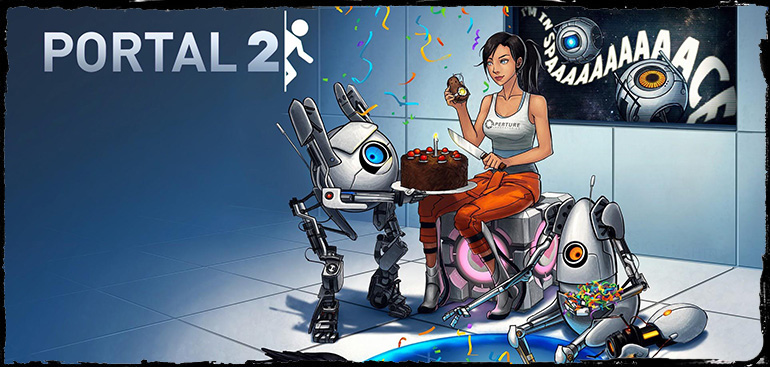
Experienced players, like professionals in the close-knit team, know what to do and understand each other with little words, even without them - with the help of laser pointer from Portal2 and Deep Rock Galactic, or otherwise marking enemies and objects: like in Left4Dead2 player’s characters automatically shout if the useful loot is nearby. But there is always a possibility to chat using regular language, which was invented for something more complex than simply ‘dig here!’.
Chat was invented a long time ago, but the microphone usage is not a problem anymore with modern internet speeds. But you should not think that having a mic means that you can get read of other types of communication: nope, not always there is a possibility and desire to talk loudly, and not always people can hear or talk. But if they see a monitor and use a keyboard, then a chat is a robust communication tool, even if there is a console player on the other side of a “wire”. After all, a player can use prepared emotion, like the ones you could choose in Fallout4 or Hearthstone, well, social network emoticons, at least.
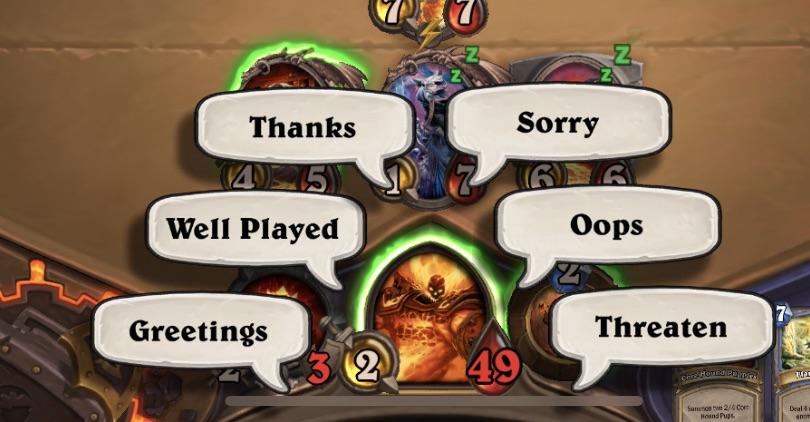
For a game to be demanded, it has to bring some new experience, to involve emotionally and to tell new stories, also with the help of already familiar elements recombination - skills, weapons, enemies, levels, intensity of gameplay and players themselves. As the Youngblood sisters are only two, the player's attention is not really focused on communication channels, as there is only 1 link! In the already classic scheme of 4 players there are 6 channels, which is close to the Miller’s Number - the number of objects simultaneously kept in a memory. And more players in a team, more chance that we will not understand the common picture of what’s happening in the moment: there is a formula to find out how many communication channels are used depending on the team member count: n(n-1)/2. By the way, that’s why in Agile development it’s said about optimal team size of 7+/- 2 members, somewhat “2-pizza team”.
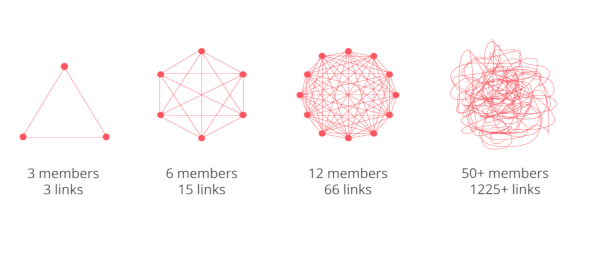
In general, talking about the Youngblood, with the following conditions, though the game requires social interaction tools, for a better replayability it should entertain players a lot more. Let’s say so: low level mechanics work as intended, this is a good legacy of previous Wolfenstein's - shooting, movement, as well, double jump added and some small parkour elements, you know, Vive la France, David Belle, les filles de Banlieue 13!.. But there are as well high level mechanics.
UPGRADES
RPG-elements are not strangers in the FPS genre anymore. And talking about them, I’d like to highlight several RPG-systems:
- Static system, without player change;
- Dynamic system, with experience accumulation for level-ups, exp-based;
- Dynamic system, with item receiving for level-ups, item-based;
- Dynamic system, with task completion for level-ups, quest-based;
This is quite a relative classification, of course, thought out of the thin air, and these definitions can be questionable, but even that can help understand how the game is constructed and how it can be improved.
The FIRST system is the most simple one, where the only thing that makes a difference for a player - is a weapon. In general, these are the classical shooter, maybe, even Overwatch or Law Breakers - games where players know exactly what to wait for from the certain characters, a somewhat simplified Dota2 scheme.. But from Coop-FPS I’d highlight Left4Dead2 and Portal2.
The SECOND system is also well known from all the kind of RPGs: more you kill, more experience you get, and the level-up tends to infinity, but is limited by exponential grows of experience points required for increasing level. However, if the enemy count is finite, it can restrict experience accumulation, giving game designers more control options. As the second system example we can recall Payday2 or some other online-shooters, using Battle pass.
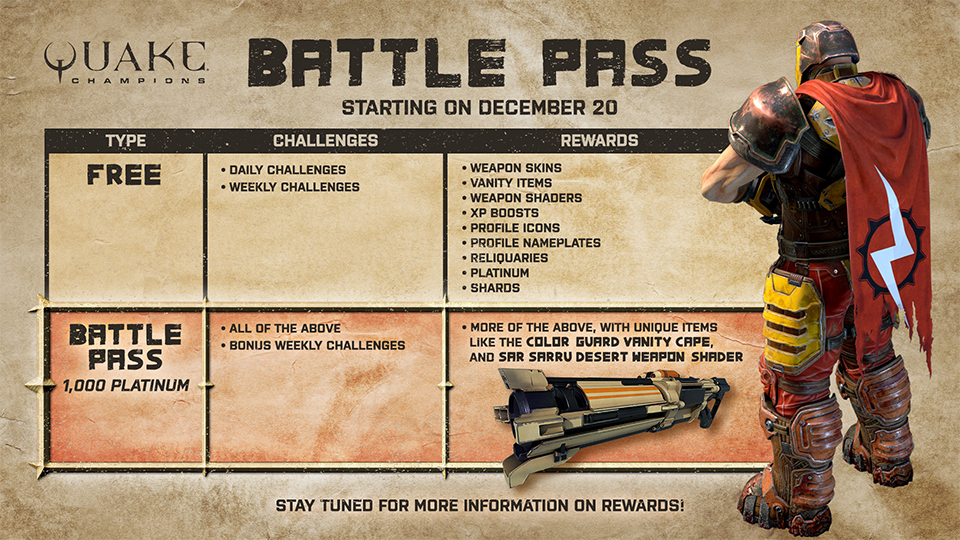
The THIRD system is about receiving items from outside. For example, there were cyber-modules in System Shock 2 to spend on skills; they were received for quest execution, and their number was limited. On the other hand, there were nanite currency that were generated randomly, and their number was unlimited - this was the thing that gave a motivation to explore the world. Well, items are the currency, which nominal is so tempting to change on some coins, stones and other loot, thus getting another one looter-shooter, like Shadow Warrior 2.
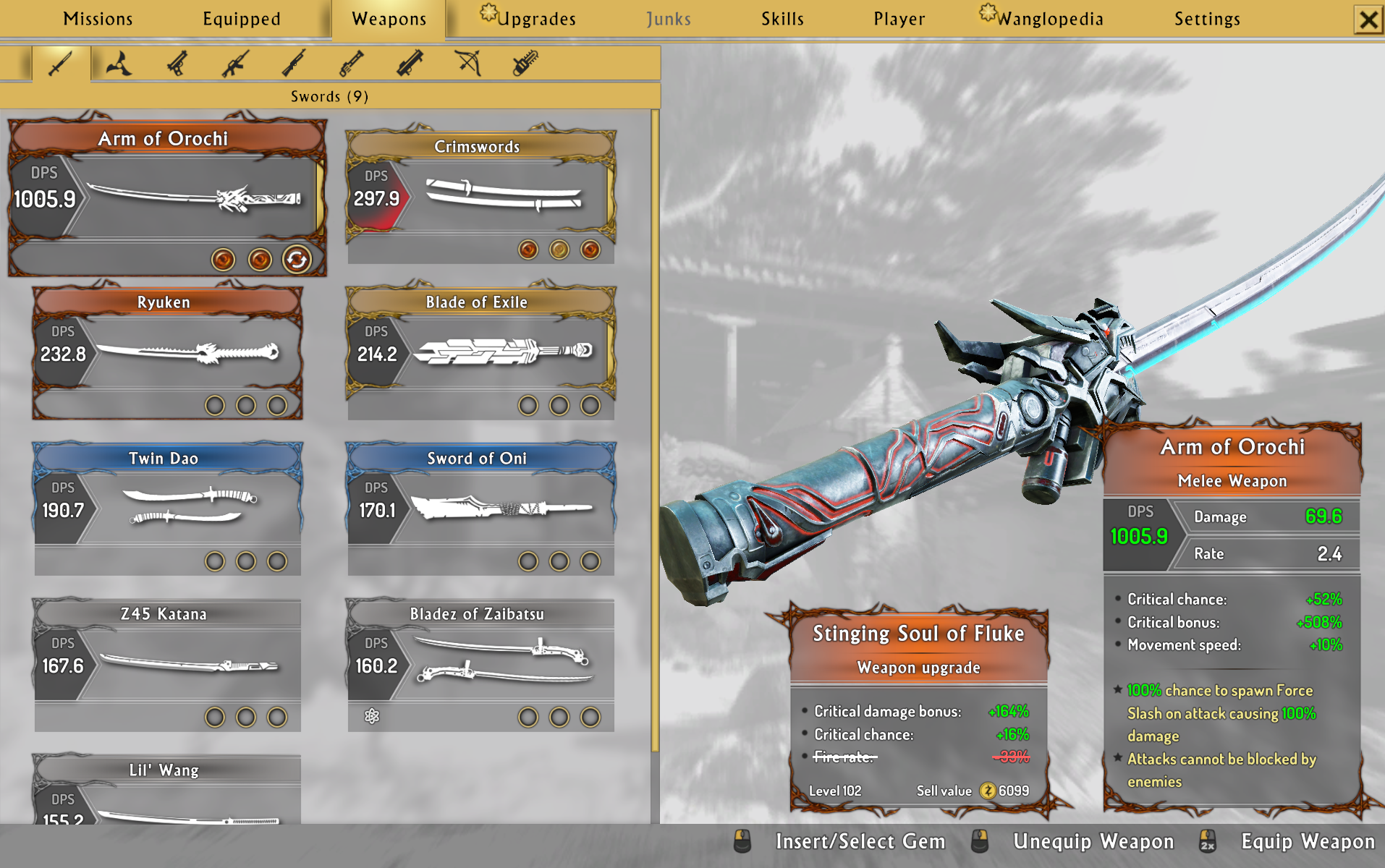
The FORTH system is quest-based, like "Click on door 430 five times."(c) The Stanley Parable. Usually, it is associated with some achievements, and only then with an RPG-system, but Wolfenstein I/II used exactly this system.
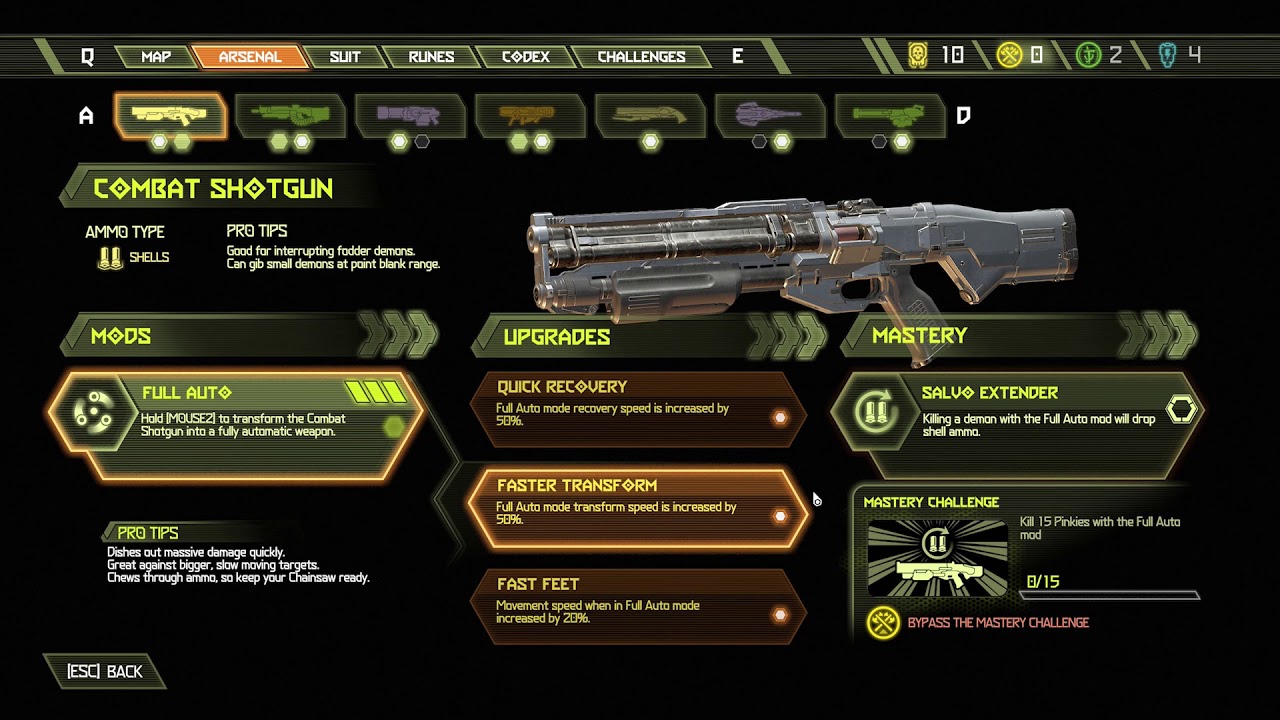
Actually, modern games use a combination of systems: like Payday2, where you can get special coins, usual money and experience… Well, the same Doom Eternal is a combination of everything: eternal experience for skins, runes, big coins, small coins, crystals, batteries, gun modules - the finite upgrade items, plus quest-based gun improvement in their final iteration. However, there is an option of not using upgrades and to walk-through in static system style, there is even the achievement for that.
Youngblood uses 3 systems: experience accumulation for perks, killing quests for weapon mastery, and item-based currency for weapon modification and buying of skins and PEP-signals (IMHO, somewhat of legal cheats).
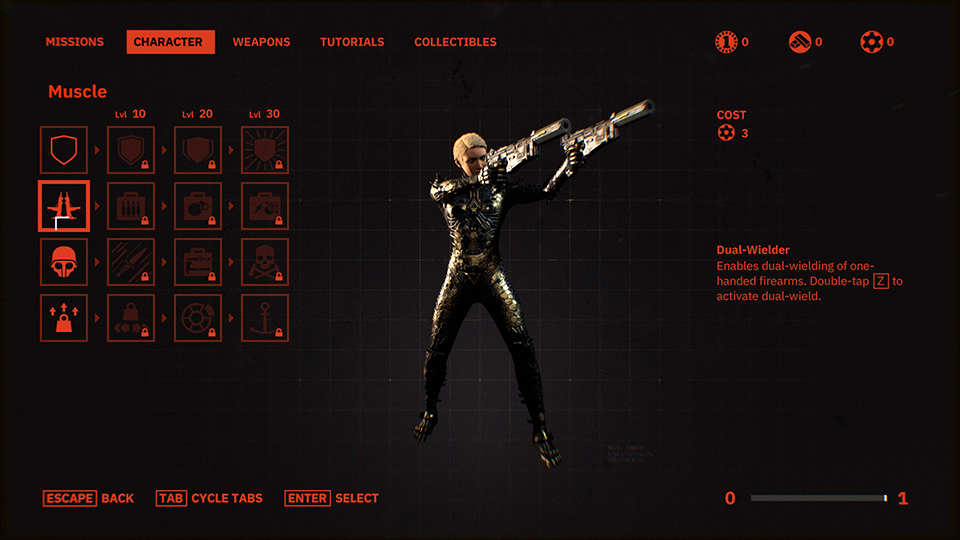
Altogether, Youngblood’s skill system is constructed from perks and gadgets of the previous games, having redone a quest-based system into more or less classical exp-based one. Only the quest of killing a certain number of enemies had been left to weapon mastery qualification, and that’s all, which is a pity, as you might expect some more complex trial from getting the mastery skill. Similar to Payday2's enormous list of achievements giving bonuses for execution milestones, for Youngblood it would be good to have more sophisticated challenges giving a player resources and experience. After all, this mechanic, a-la Doom Eternal, could be used for getting the final level of weapon mastery. For Youngblood it would be the 25th level, but as well, there could have been an intermediate level - like 10th, linked to achievement, and possibly, the 1st, quite simple, the discovery one - in a spirit of previous Wolfenstein's.
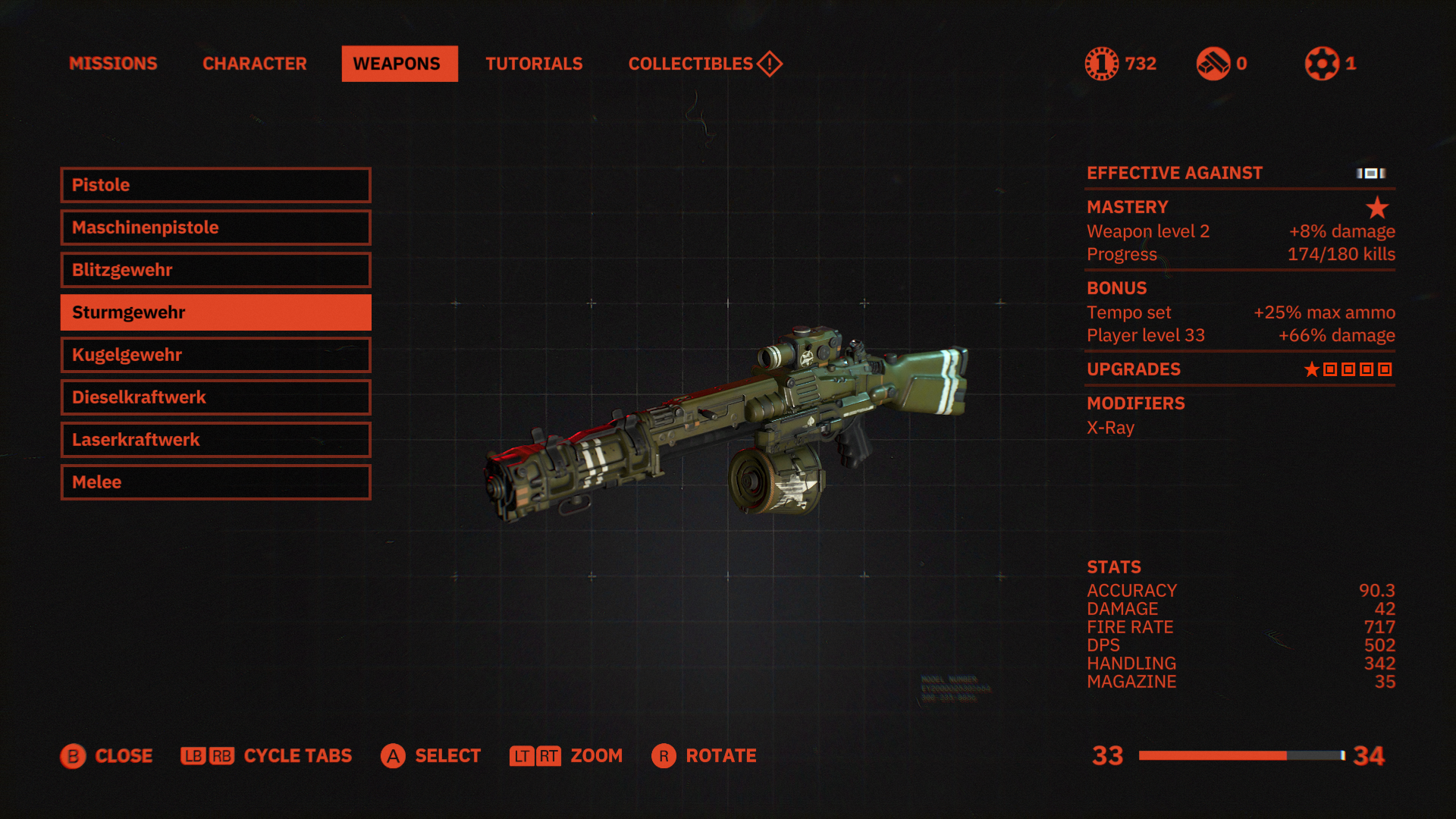
There is the Zeigarnik effect when a not finished case does not let you dream well. The list of easy to complete achievements should be mixed with step-by-step more complex, and the player would try to complete them to make a 100% game walk-through. But the tasks should be possible - and not dreary-long, impossible or randomized, as according to Lev Vygotsky, for a task to be interesting it must be in the player's proximal development zone, and should be calculable. I.e. an expansive growth of a task (like driving 200 laps in Need For Speed) is not a solution, because the player has already done it! There should be a quality leap. In return, a game itself should create completion conditions for tasks and achievements.
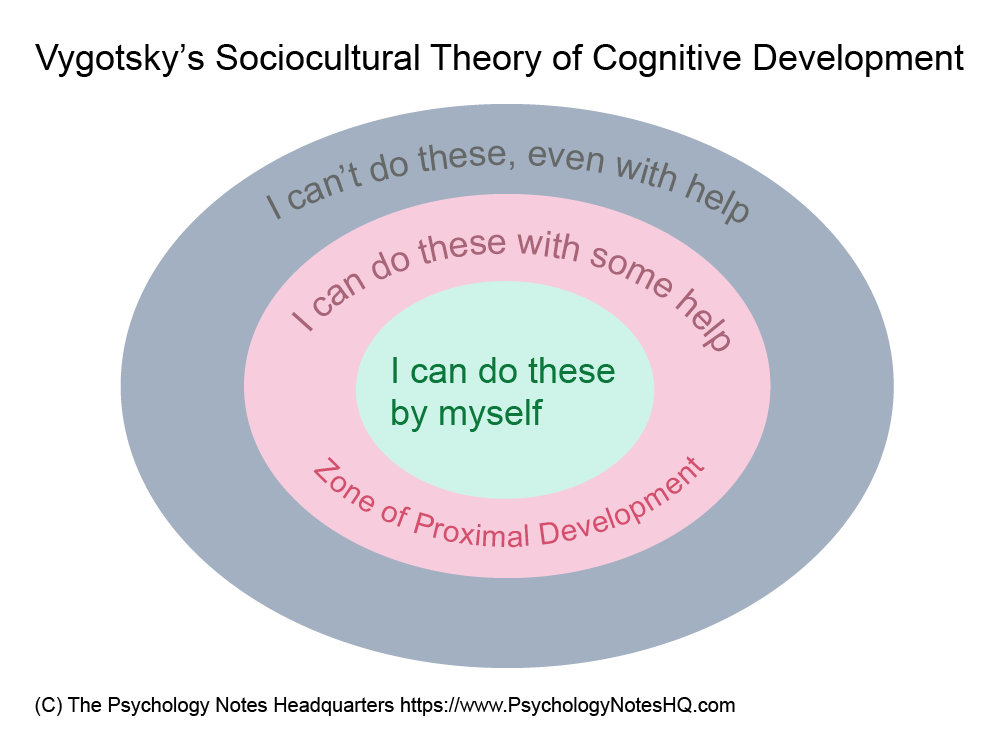
As for the coins, that’s complex. Like the book "Irresistible: The Rise Of Addictive Technology" tells us, the human organism prefers sudden lottery winnings over systematic accumulation in a dopamine equivalent. That’s why there are gambling lovers and that’s why there are loot boxes. From this point of view, in Youngblood finding big random sums is more involving than constant pick-up of 1-2 coins. And even from the gameplay point of view, coin pick-up is interesting only for the very first time, and then starts to become distracting and tiring. If we’re going into looter-shooter mechanics, then, at least, there should be removed the “button”-side of the process, there should be an auto-collection: if the ammunition is gathered by the button only from the big boxes, then the same mechanic should be shared for the other loot. In Shadow Warrior 2 coins pick-up was boring. Probably, it was actual in Wolfenstein I/II, as there were need to fulfill some special conditions for a perk, but in Youngblood this is definitely harmful extra, especially, if the game is aiming into multiplayer walk-through.
And again, getting whole skin or a module for a task execution or finding them in a process of it, sounds much better than “save the coins”. Here can be even the quest of raiding some Nazi lab in a search of new designs or getting them out of the dead body of some armored general, similar to one you’ve been fighting on the Zeppelin - and after that even some coins could be tossed for that. Besides, if you do some not very long chain of tasks in one quest, then a player would execute them, as the tasks were already given, and as this chain is not very long, and he has already started then it would be good to finish, as otherwise it will be the lost profit… And even if the award is given in currency, and the sum is a little bit lesser than the price of an average purchasable object, then it will automatically prolong game’s life for a few sessions, as there will be a little bit left to gather up to purchase the next item, and the next, and the next… It’s somewhat Netflix and Co does with their series. By and large, it’s something of lost profit fear combined with the Zeigarnik effect.
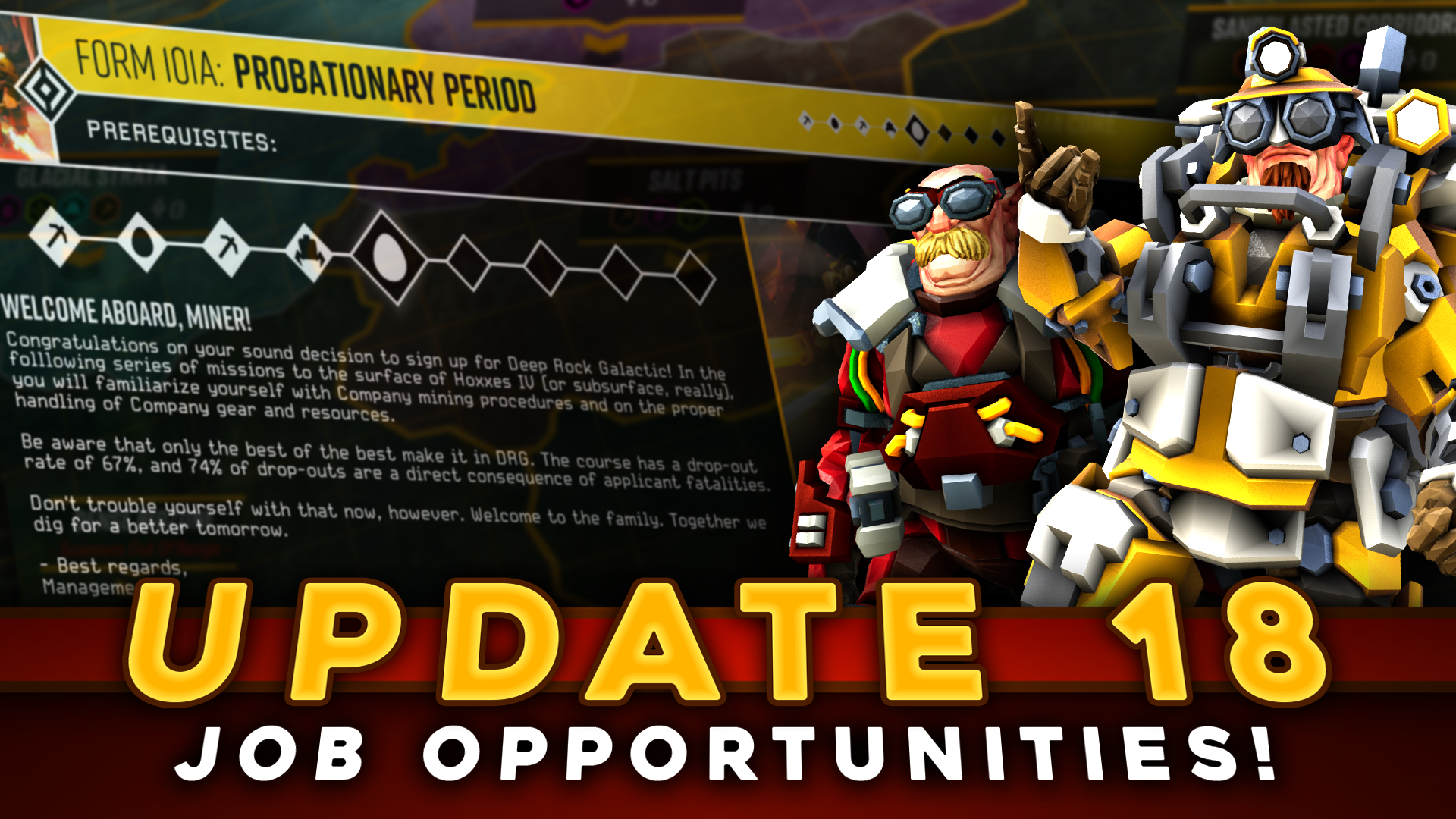
Well, something similar can be found in Deep Rock Galactic: in the very beginning you get the quest of 3-4 missions to get the overclocking modules, then, in some mission you would find the lost activator, which requires some challenge to be passed, and this would get you a module matrix; and, finally, to forge this module you’d need to mine different resources from different map types. And knowing that this overclocking module can be applied only to the completely upgraded weapons, which is directly related to the level of a character, then you can count 50 hours of gameplay for sure. Either with that a player would get tired of all of this, though it can be solved by some paid experience accelerators, a-la WarThunder or Quake Champions, or the game would be full of players for some time. How much time - it depends on the replayability level, but this is the part of the game as well, isn’t it?
CLASSES
Class-based player functional division was introduced in the Quake’s Team Fortress mod. There might be no classes (Left4Dead), classes might be strictly defined (Killing Floor 2, Deep Rock Galactic), or the class borders might be fluid (Payday2).
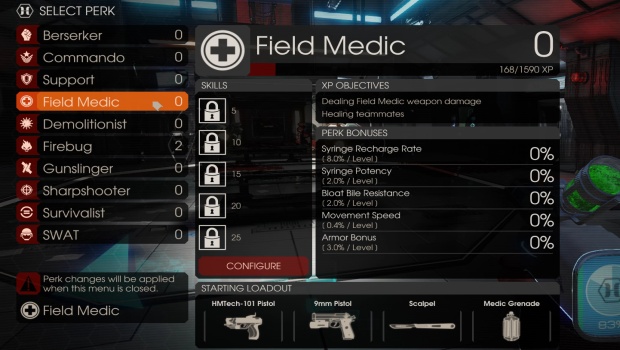
I’d like to say that in Youngblood we have fluid classes, but, in reality, a player can improve all the skills by default, thus removing all the borders between the sisters despite the fact their difference was announced from the very beginning, and that creates somewhat of a ludo-narrative dissonance. I’d prefer to feel that here I’m playing as Jess, long range fights lover, and here we have Zoph, the one who loves close combat… Even Jess’s knife and Zoph’s axe are not adding different battle styles, simply being cold weapon skins. And that's a pity...
It would be interesting to get really different classes, creating different play styles and adding necessity for players to cooperate to achieve common goals. Ideally, girls should have strong basic perks that being used with skill would allow even low-level players to play with high-level colleagues; and more advanced perks should not simply copy the ones from the alternative class - they should compensate the disadvantages not remove them. Sisters must have a need in each other, not to be turned into mini-BJ's… On the other hand, this might be an idea…
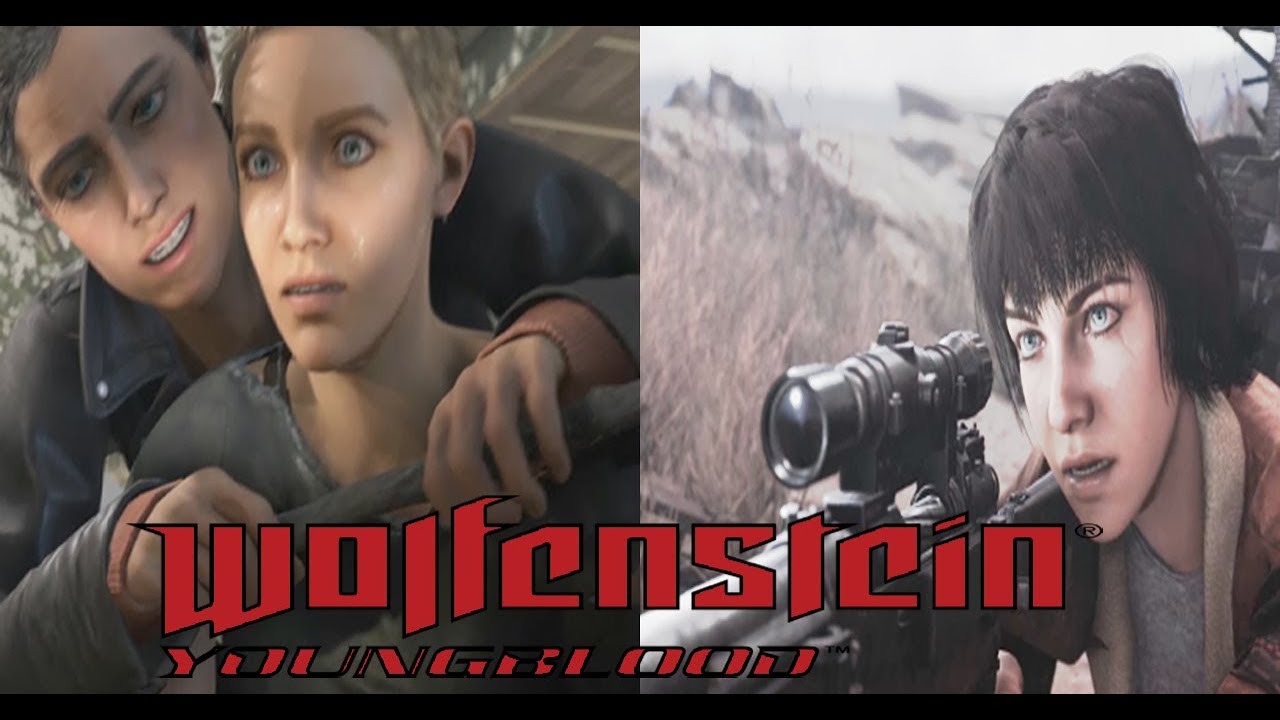
Besides, if we use the mechanics of mini-quests for getting final level of weapon mastery, then they can differ for Zoph and Jess, like it was done in Quake Champions, when the same rune had a different trial for each champion. For example, Sturmgwehr trial for Jess could be “5 headshots with optics non-stop”, and for Zoph - “5 akimbo kills, no reloading”, and these kinds of quests would emphasize the characters without the mechanics upgrade complications.
WEAPONS
Currently, in Youngblood there are 2 melee weapons, which is one and not modifiable, and 12 firearms:
- Nahkampfwaffen: Knife, Axe
- Pistolen: Pistole, Maschinenpistole
- Gewehren: Blitzgewehr, Sturmgewehr, Kugelgewehr
- Kraftwerken: Dieselkraftwerk, Elektrokraftwerk, Laserkraftwerk
- Hämmer: Kugelhammer, Dieselhammer, Uberhammer, Kugelhammer
- Granaten
I would have added Kampfpistole, that was present in the previous game, accordingly to the pistols. Of course, it’s functionality is quite a bit of Dieselkraftwerk, but as a special pistol it would be cool. Maybe. As well, there was some sniper/laser rifle in Wolfenstein The New Order?..
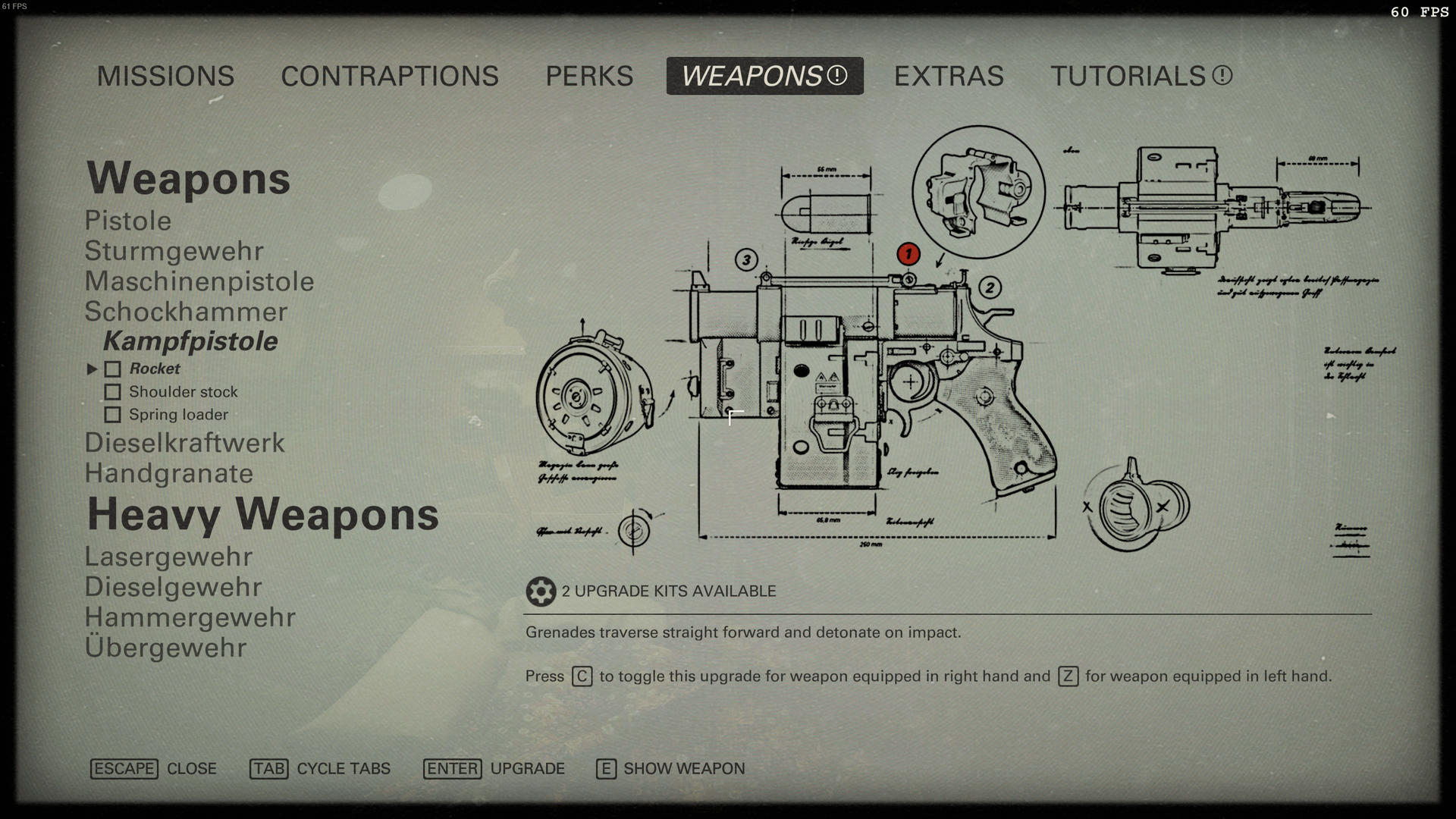
So, the small arms have 5 modifications each, Kraftwerks have 4 and Hammers - 3, where each modification offers 3 options with upgrade. Counting all, there are (5*5 + 3*4 + 4*3)*3*2 = 49*6 = 294 modifications for all the weapons.
So if we take in account the concept of coop-limits, there are things to do. The current weapon mechanics (and not only weapons) seem to be single-player intended, as they totally ignore the time that is required to think over the upgrades, buying them and appropriate build selection from available modules.
FIRST, a player should be forbidden to change weapon build not being in the Hub - maybe, only to remove some of the modifications, like a pistol silencer or an assault rifle’s optical sight, thus switching between weapon default and player’s modified battle tactics. This way a Hub, in general, and a shooting range and/or simulation machine with training/challenges to test a player’s weapons setup, in particular, importance will be increased. Well, currently, on the final stages of a game a player is not changing weapon’s build, as it’s already tuned for a player’s comfortable playing style - though, it would be nice to have a loadout system, like 3 per weapon, for convenience.
And if the mechanic of receiving modules would change from simple shopping to quests and a little of random, then every new module will feel like a real prize! 300 modifications won’t let you be bored on the streets of Paris, especially if a mini-task is added for every modification… Like, "Quest for everybody, free, and no one will go away unsatisfied!" (c) or, well, simply no one will go away. But of course, it might be too much, though it depends on the gameplay’s replayability being high enough. At least, here we see the monetization option: buy modules for coins, coins for gold, gold for currency...
SECOND, a number of simultaneously available weapons for a player should be reduced. The same connection links work on the weapons your partners use: in a good teamwork you follow the situation it's best to involve your partner abilities, be it some special or the choice of a Gatling gun, for example. Even in a single-player game some choices might be reduced, as it prove RAGE2 and Doom Eternal. Probably that's why the latter has such an asymmetrical MP, and Doom2016 MP is different from SP.
As well when you concentrate on weapon mastery level-up you’re not really switching the guns, as you need to shoot out a certain kill count. It’s Doom Eternal, where each enemy had its own preference in weapon and ammo type to be killed. In Youngblood there are only two armor types, and each weapon is predefined to be working good only with one of it, which means that a player requires only few for a mission: a knife, grenades, light and heavy weapons. And if we would add different ammo types from Wolfenstein II then a player might need only one weapon, and like it was already said, that’s what you do when you improve it’s mastery skill. But of course, this sounds a little bit too radical , especially, as you need Kraftwerk's for different doors. It would be more natural to reduce weapons by already made classification: Melee, Pistols, Rifles, Heavy Guns and Grenades.
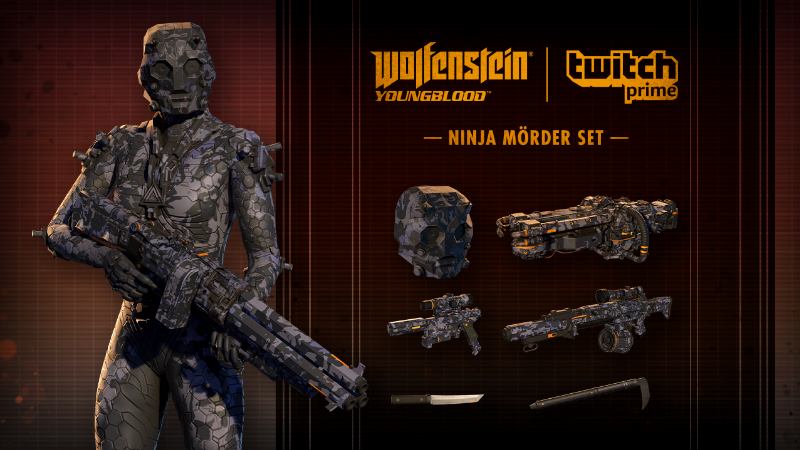
Well, the standard weapons - pistols and rifles - are pretty much understandable: to compensate for game tactics, we can add the temporary usage of enemy rifles - a-la perkless Hammers: pick up, shoot out, throw away, repeat if required. And I would have added a perk for a B.J. a.k.a akimbo shooting with every standard weapon as an homage to previous series, where you could not shoot akimbo while you don’t find a second gun, and in Wolfenstein II there was added a possibility of using not the same rifles for this.
Talking about the Hammers, they are already unavailable for an inventory, if your character does not have a required perk. Of course, the game is balancing between old-school and realism - like, ammo is taken only by yourself, you cannot shoot the rifles akimbo, but! - you can take 4 Hammers with you! It seems that girls' armor pockets are leading to another dimension, well, somewhat, the reason for the Quake events.
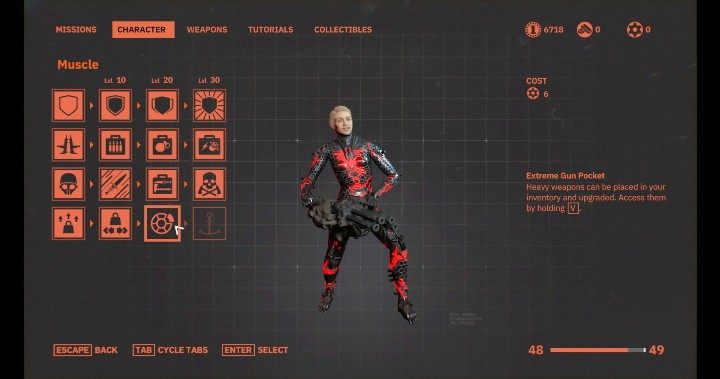
Kraftwerks, as something that the B.J. himself was using one piece a timeline, especially are not recommended to be taken together, because they open different doors - of course, usually, these are just the accesses to resources, but if that would be the doors critical for a mission, then this would be the another reason to play exactly with the real people using different Kraftwerk's, and it would have felt more natural than existing joint pulling of gate levers. Besides the Wolfenstein II legacy Sprint Crush, the Kraftwerk's could have been a game design tool to control the access for side mission locations by the variable condition of 1 to 3 Brother towers conquered, a-la all the kind of metroidvania-style game with pseudo-openworld, like Blood Omen, Soul Reaver, Mirror’s Edge 2 etc.
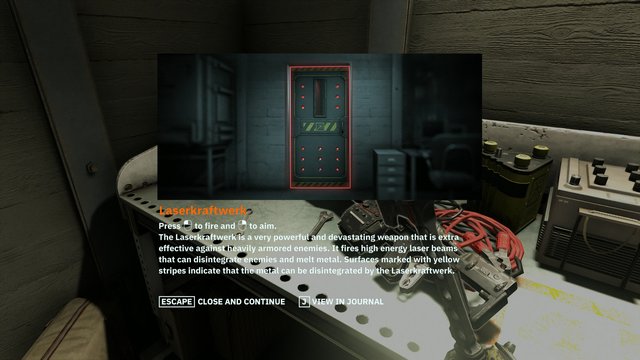
Well, in Youngblood there was such a mechanics but somehow it I don't remember this wow-effect of finding something new unexplored that you could have simply passed and finish the game without knowing that this cool feature has existed. Probably, that's because mainly this mechanics was used as main plot location stopper. But this could have been something like finding the totally unnecessary Fire Reaver in Legacy of Kain: Soul Reaver. I guess, the Kampfpistole could have played the role of a such bait. Or else.
REPLAYABILITY
Replayability means that an in-game progress reset is not a problem, and it even can be turned into game mechanics.
First of all, sisters progression should be tied to a player, not the campaign, which seems to be a legacy from the single-player stage of development. Thus we would get the possibility to restart the campaign without resetting the gathered experience, and to reset all the gathered experience for getting some bonuses. For example, in Payday2, when a player achieves the last, 100th level, a game opens the option to pay 2 billion dollars, and to nullify the progress. After that the game receives a fresh low-level player, and the player - the achievement, accelerated experience gathering and some elite mask. Or another example of Deep Rock Galactic, where a new game mode is opened after the nullification which is called a “promotion” there.

There might be two types of game awardable reset: player level nullification and a campaign finishing. If we would take the above-mentioned ideas about the class development, and weapon limitation, then I suggest as awards either an alternative class skill or a weapon slot to a player, thus slowly returning to the original Wolfenstein parameters. And it requires some counting to understand what should be given and for what.
So, about the awards: if we talk about the weapons then there are 12 firearms, 4 initially available weapon slots, so there might be 8 resets - or even less, if we decide that a player can have only 1 Kraftwerk and only 1 Hammer. And if we talk about the alternative skills - well, it depends on the number of the unique class skills.
If we would have 2 really different classes, plus a glass ceiling of, let’s say, 50th level nullification that would limit a player from getting every possible skill and be the only option to rearrange skill points thus increasing a number of walk-through styles so that it is still interesting to play the game more and more - for example, replaying campaign for several times.
And if single-player would have an option switching between sisters - like it was in Venom: Codename Outbreak - that will make the game more dramatical in the moments of being shot down and immediately switched to the second comradess (and sometimes when AI glitches you’d wish to have this option), but more interesting as it would justify the smaller arsenal and bring more tactical options. For example, you’d give Soph some shotgun, Jess - some sniper rifle, switch between the characters depending on the location, and even place the sisters depending on your preference of the fire distance.
And to have an additional motivation for a player to collect all these improvements there should be a metagame about getting the B.J. himself as a playable character - well, the guy has been to Paris! If a player manages to collect all the weapon slots and skill upgrades, he would get the achievement (something like “Blazkowicz Legacy”) and playable B.J., as he was shown in-game, for a single-player game, but with a possibility to join the sisters, creating 3-player game, which can be used to open some secret missions using 3 different Kraftwerks! Otherwise, B.J. would have only one way up to the top levels (and another achievement for that!).
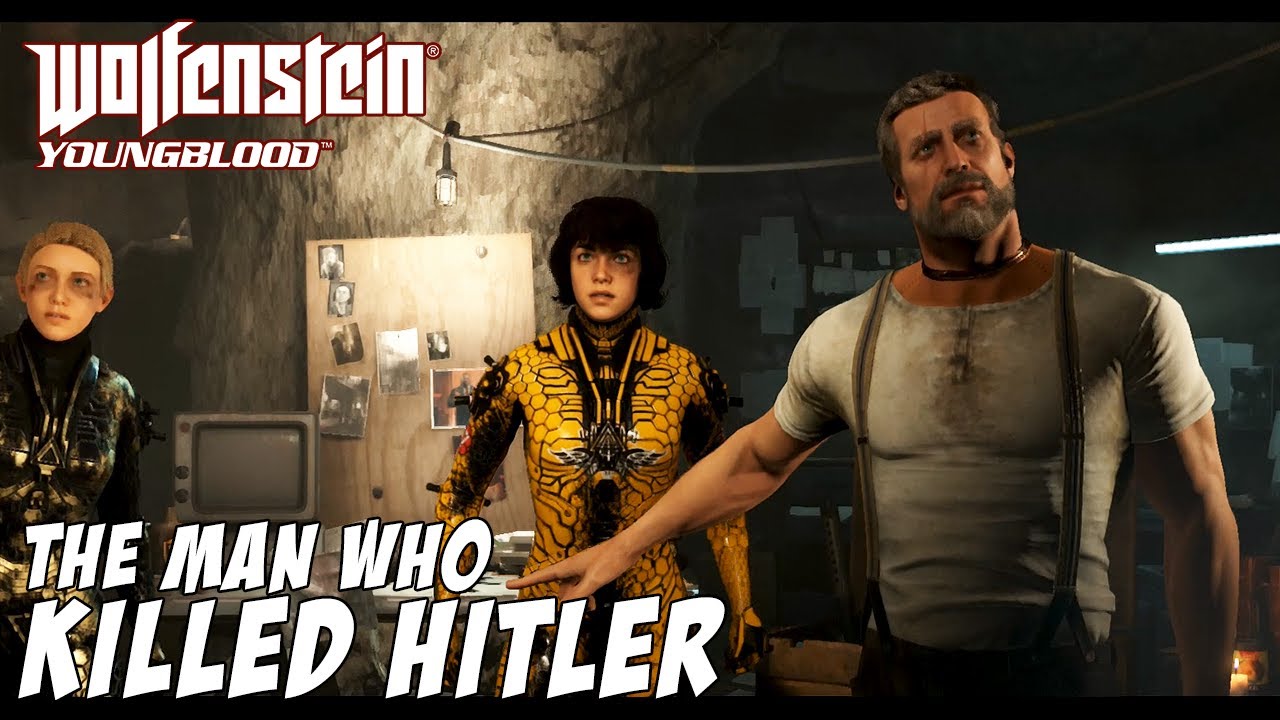
To summarize, B.J. character:
- Is available after all the closed upgrades are open
- After getting B.J. nullification is deactivated
- Has no partner in solo game
- Can join the sisters’ game
- Raises the danger level on streets (Panic on the streets of Paris...)
- Has purchasable skins, including his bathrobe model!
- When he finishes the campaign, player gets the achievement
And, mb, even Abby could be a guest hacking-star in some missions - like escort the VIP?..
And of course, if we detach sisters’ progression from the campaign, then a player should have a right to select a difficulty for any mission. Wolfenstein II already had a commander’s desk with an option of replaying separate missions, and this was required to get missing collectible items, so it made sense even in a single-player game. And in the open multiplayer, where the players have all the different levels, it is a simple necessity. It’s impossible to balance a game to have an equal challenge and interest when a noob and a veteran are playing the same match. The issue is not about enemies’ health and damage on a different difficulty level, though I’ve always thought that difficulty multiplication is a very discussable solution that devalues a player’s game experience. The difference between a noob and a veteran is in a qualitatively different experience, knowledge of weapons, tactics and enemy behavior. I believe, the higher the level of difficulty is set, the smarter enemies should be. For example, like in F.E.A.R.. Well, even Quake3 managed to have difficulty levels not based on multiplicators.
And nullification mechanic allows to create somewhat of a mentorship institute, where the novice player watching the more experienced one can learn new tricks. Besides the nullification for the creation of such same but not the same level player pairs there could be used a mechanic from WarThunder, where the mastery level of an unused machine crew is getting decreased with time. Well, it can be offending for an ego of some players, but still once beaten Quake3 on the Nightmare difficulty does not mean that after several years even the Hardcore difficulty might not be won from the first time. A skill requires practice, and this game mechanic could be used to retake the responsibility for a game character level lowering from a player to a game itself thus making it easier for a player to return into gameplay. For example, in Payday2, after a long absence, it’s not very easy to recall why you have selected exactly those skills, perks and weapons, like the game is pushing you to heist those 2 billion dollars, to pay for the nullification and then you might have a rest. But as this is a simple grinding task not so simple in an execution, probably, that’s why I still haven't finished the Mexican DLC that came out after a long break for both of us...
ENEMIES
If we recall Lef4Dead2, Payday2, Deep Rock Galactic, then there are regular monsters and “one-touch” monsters, which help players to learn quickly that wandering alone is not safe. Doesn’t matter what difficulty level is set, though it influences the probabilities, a game can always put you on the brink of failure. That’s the way how the piquancy of a gameplay is achieved, a constant balancing on the edge of a blade, when even if a player understands how to deal with regular enemies, there is a subtle tension in an anticipation of some irreversible meanness.
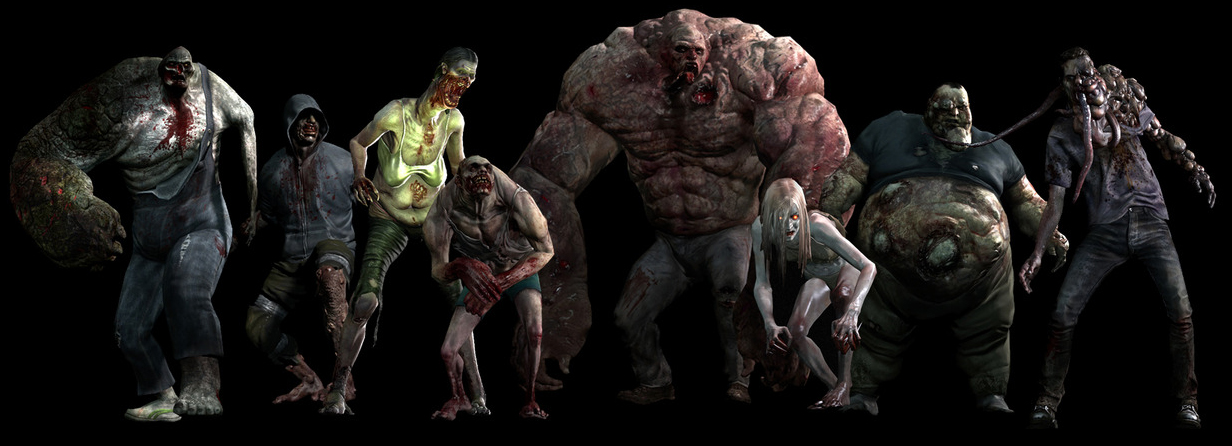
In Left4Dead2 all the “senior” zombies, emphasizers, according to Mike Birkhead’s enemy role classification, this or that way were disabling players. Deep Rock Galactic has cave leeches, grabbing you from above, spitting web spiders, making you blind, mactera grabbers, grabbing and dropping you from the height, glyphid exploders, sneaking and suiciding close to you, and so on… And Payday2 has the cloakers, immediately knock-downing a player and checking his ribs, kidneys and a face with a baton; the tasers, from which only a convulsively twitching finger on the trigger of a gun can save you, if, of course, there are bullets in a magazine. Everything to make you careful, adaptive and playing as a team. And that’s a potential monetization option, like extra life for some coins, like in Warface...
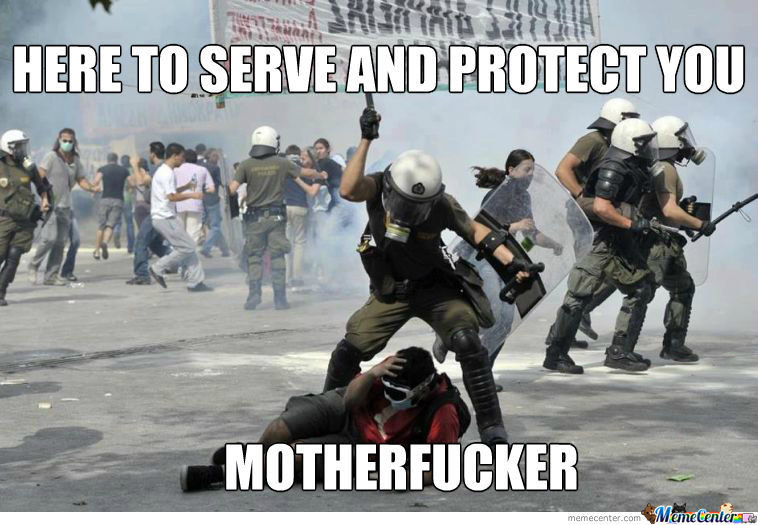
So, in general, there is a need for all kinds of enemies. And Youngblood is pretty simple in that matter: though there are enough enemies of different types, mostly of which are previous series legacy, they are killed by a brute force, and they offer nothing but a brute force. And if earlier it was compensated by a plot, a linear game design and brutal B.J., to whom akimbo shooting fits naturally - well, he’s the great-something-grandfather of a Doomguy, after all! - but in Youngblood there are quite weak compensators, even Blazkowicz kidults’ charisma being quite far from their famous father. The game requires not only harmful enemies but also dangerous enemies: for example, some special force unit that would run up to you and would make a short circuit to a player’s armor, immobilizing him, like android David did with android Walter in “Alien: Covenant”. As I remember, there was something of it in Wolfenstein I with Supersoldaten being able to one-kick the shit out of B.J. getting too close, despite the lowest difficulty level…
Well, if you think about the enhanced enemies, then Doom Eternal has shown a pretty nice example of how the semi-bosses are getting into the list of regular enforcers. Same here, depending on the difficulty level and a level of a player’s impudence, as he stays for too much time on the same level, a reinforced squad of GTA-polizei can arrive, wave by wave, up to the generals in sisters-like armor. And this general body might give something precious to a player, for example, somewhat of collectible praetor upgrades from Doom2016. The same mega-bots, a.k.a. Zitadelle, can be the source of something precious.
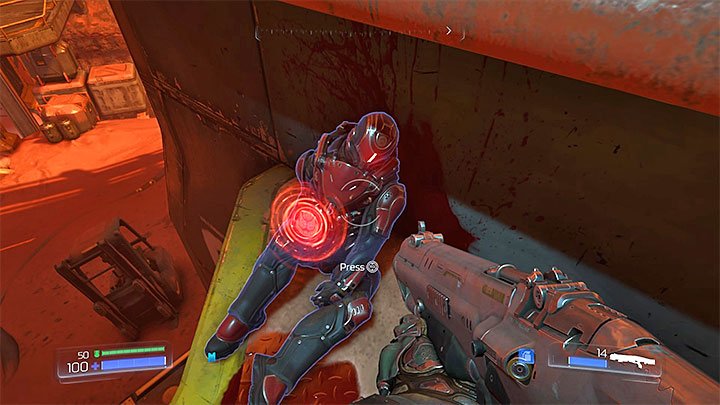
LIFE SIMULATION
If we return to the idea that a game should create stories, then Youngblood is rather poor on a new experience: a single-player basis with scripts, locations based on the same brute-force battle scenario causing more or less linear gameplay thus creating a limited experience. And the question is not even about the level design, though they should be improving a gaming experience, the question is about the levels to be felt alive.
So, what do we have at the moment? A classical Wolfenstein gameplay, with soldiers’ routine patrolling, irremovable bodies and the commanders calling for support out of thin air. It's quite good mechanics, Metro: Exodus used it as well - brutal force for low difficulty level, stealth for high difficulty level - but if in a single-player you have a save/load magic and a patience for learning routes and multiple tries to wipe out a level, then a multiplayer is pretty bad on stealth - Payday2 is the example of it. So, it’s time to discuss enemy behavior.
Some time ago I played Aliens vs. Predator 2000, and there was a notable enemy behavior. In general, it’s related to aliens, but also humans had their features in reacting to extraterrestrial life. AI-controlled aliens were playing the role of a cannon fodder and were spawning randomly in waves, quite freely running on a level thus keeping up a suspense. Next AvP series installments had missed this, as it became clear after several save/loads where the script's trigger point is and when you can relax despite the nervous music or got-to-be-scary moments. In AvP2000, to blow-off the stream reducing a number of currently spawned aliens, there was a mechanic of "battlecry" that allowed in a style of Hudson to call for an emergency meeting and fire unwelcome guests. In a case of playing a Predator sometimes you'd need to camp in a corner of some alienated room in a style of Alien:Isolation to slowly restore the energy bar, then health bar, and again energy bar hoping that there were no alien/human running nearby to find the source of a healthy roar. Well, even the human AI despite the technological simplicity of the game of the end of the 90's, had its behavioral features. For example, my friend was telling me with a passion that some scared marine ran away from a cloaked Predator, then started to randomly shoot in the air and accidentally had killed other marines! Simple mechanics in various combinations can create stories to remember!
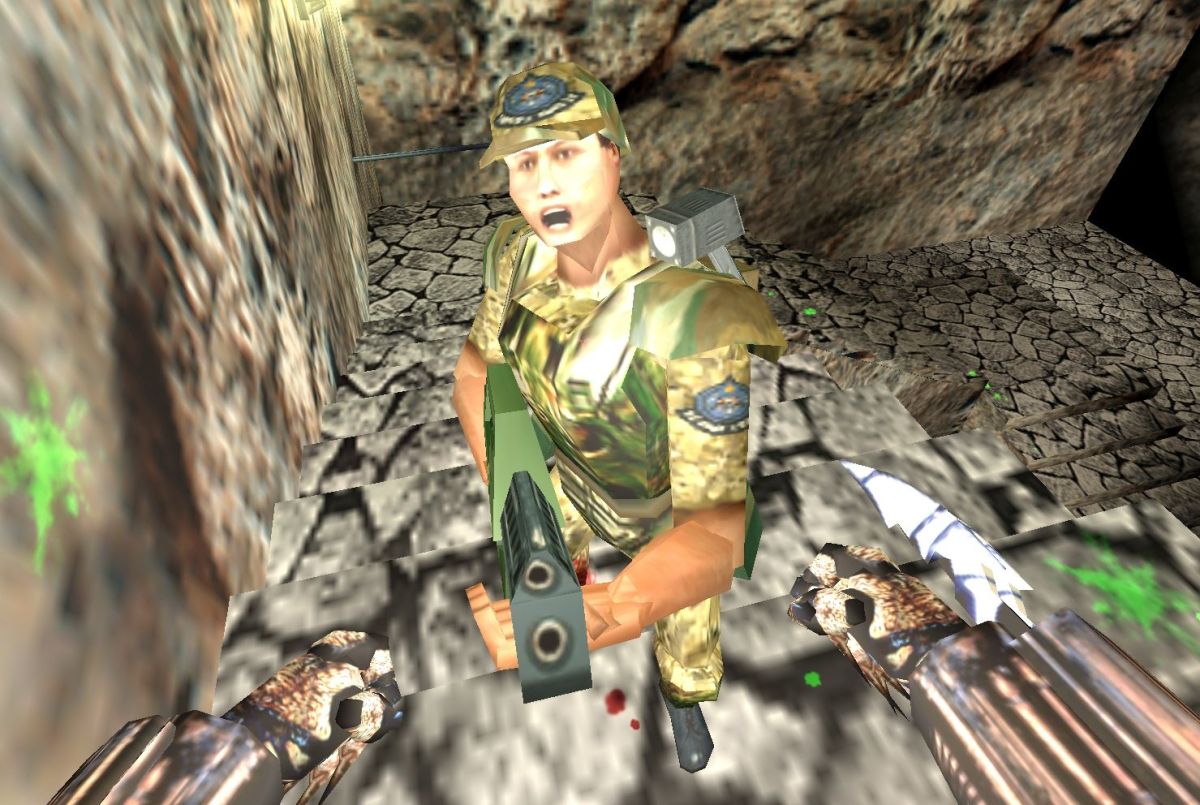
Similar patterns for creation of pseudo-life on levels could be used for Youngblood. A player in stealth has moved past the enemy? Let him check the suspicious sound in a green mode, call for support in an orange mode, or shoot at once in a red mode! Let’s not forget that we have here famous Terror Twins, and lower rank soldiers can do irrational things, give up or run away to the adjacent zones, and the commanders would shoot the deserters! Of course, it would be too much if every enemy would do it (only in debug mode), but only in specific cases, with low probability.
Talking about the waves, it is only logical if there would be an enhanced squad arriving to check the alarm place. Currently, wiped out territory is lazy filled with Nazis, and that even creates a ludo-narrative dissonance: am I playing as the most-wanted terrorist or are Nazis not bothering that their outposts cease to exist? Left4Dead2 had its own AI-director to correctly guide zombie waves, and it would be good for Youngblood to have its own version of GTA's star system, beginning with a small patrol and ending with the whole general in an uber-armor. Of course, depending on the difficulty, the game should regulate with what star the alarm begins, how many enemies should appear, and how successful a player is. And if there will be no stop in pursuing sister with constantly appearing new squads of Nazis, and regular retreat options won't be available, then usually ignored catacombs could become a natural part of the gameplay.
And, maybe, a player might need allies from La Resistance, that would follow their own goals, and a player, in the style of For Honor, would solve their problems? This turns PvE into PEvE, where new types of missions could be added - assault, retreat, VIP escort, domination, even the heist, if you wish! And if the mentioned missions are to be selected from the Metro map - both creating and joining, like in Payday2 or DRG - then it would be a nice contribution to cooperative walkthroughs.
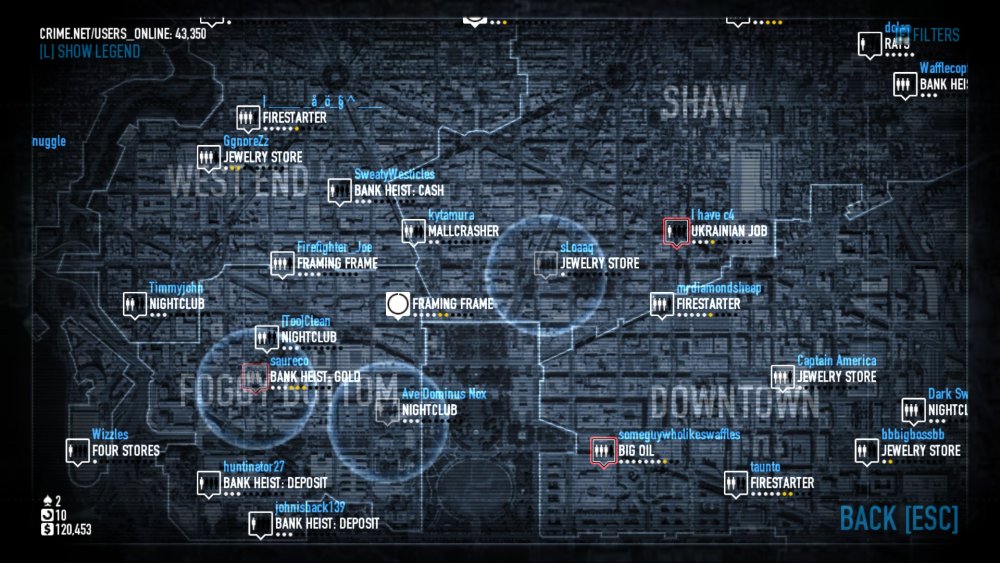
And if a player would be allowed to control the enemy soldiers, similar to Left4Dead2, Killing Floor 2 and Doom Eternal, making PvEP or PEvEP...
LEVELS
Level design should match the gameplay. Multiplayer shooters have taught us what the battle arena should be, so that different tactics are used, based on weapons, enemies and environment. Of course, game mode is also affecting player tactics - assault or escort behavior differs, and levels require different structure to create interesting situations. For example, in Quake Champions there are levels created for duels, but used for every game mode, and that creates map balance issues. Of course, multipurpose usage of “public” space is more profitable than creating a new arena for every new gameplay case, but quality one-goal levels should be there as well. Thus balanced levels will create interesting stories for a player.
However, ideal level balance can be countered by a randomization. In Deep Rock Galactic every mission is a generated cave, with certain generation rules and with randomness, which bring novelty as you never know the level structure for sure, will it be friendly or not to you, and how you will solve the dimensional puzzles in parallel fighting back the buggers.
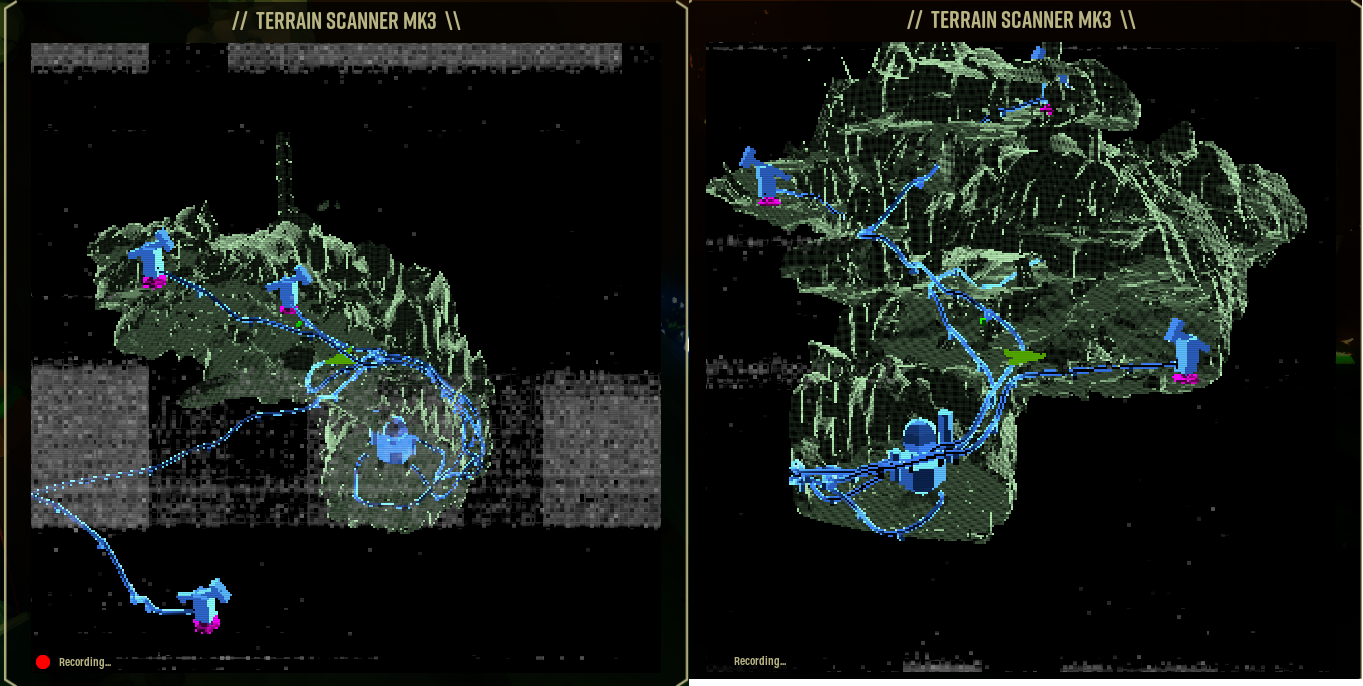
Or another example - Shadow Warrior 2, where all the side mission levels were seems to be generated from 2 type assets - the pastoral Japan village or the neon Cyberpunk city (that's why I had a feeling that the developers have combined together the unfinished original developments of Shadow Warrior 2 and Hard Reset 2). In general, this is amazing. But after some time playing on these levels an observant player would notice the common patterns and rules of such levels generation and, as well, the flaws of the AI-architect, like the impossibility to go inside a room with some bonus, as the room is outside of the playable level area.
Another thing is that the randomization can reduce the exploration interest, as, paradoxically, the uniqueness of every generated level makes them not unique - what is the point to search through every corner of the level if an AI will make an endless number more of not the same but similar design levels? And here comes the grind! - a generated level should contain some kind of an "easter egg": there should be a probability of the objects, giving some serious boost for a player, or creating an event when activated. In Deep Rock Galactic these are the crates, requiring to find some additional equipment around to be opened; the helmet, that reveals some area on the map containing the bonus; and the timer event creating machines, etc.
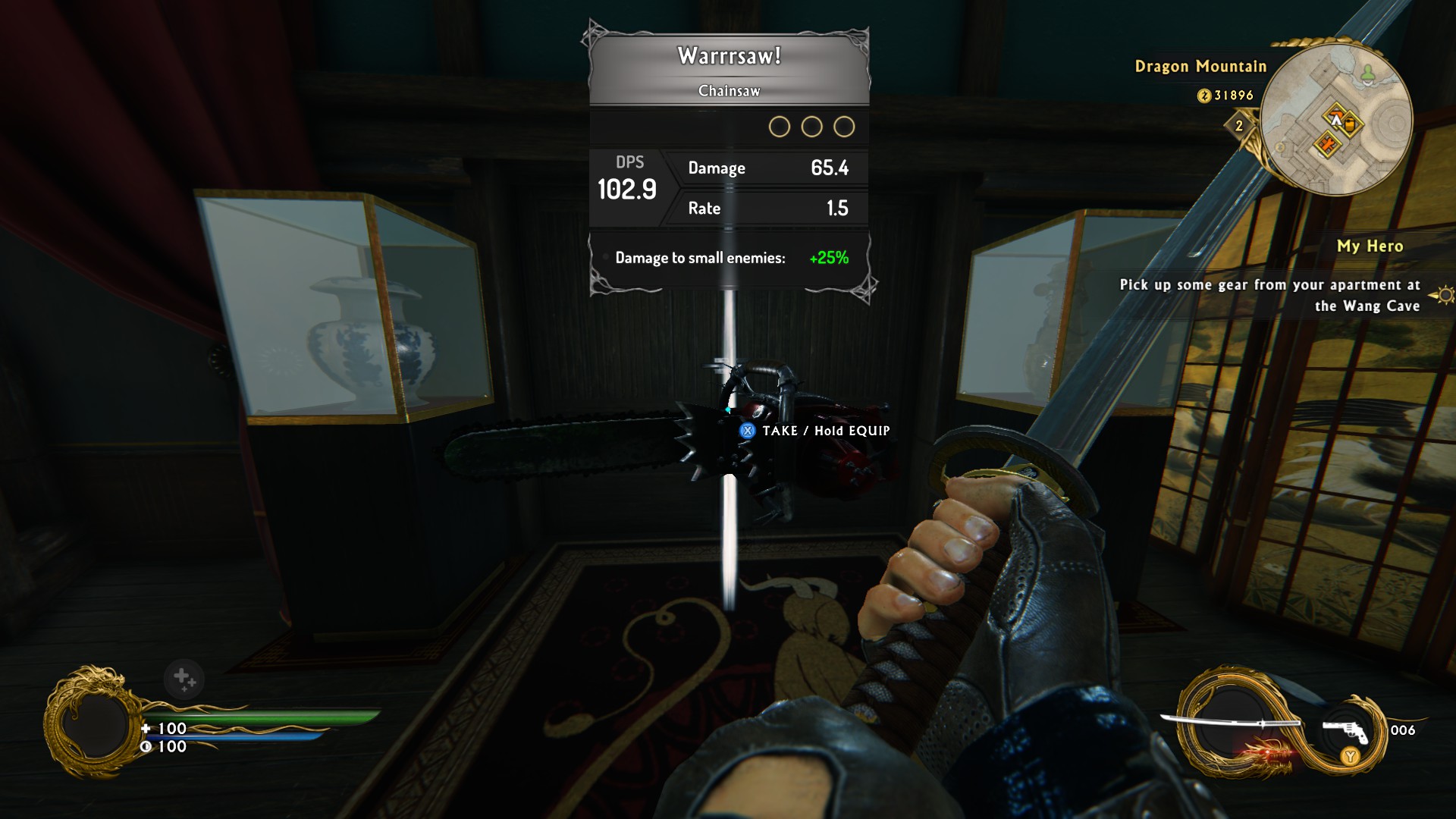
Youngblood can utilize the underground levels in a similar manner. They looked the same in the dark and had no real memorable feature, so I believe they are completely okay to be generated by an AI-architect. This would simulate the complex system of Paris catacombs, easy to get lost, hard to find the exit. Like in Diablo2, every dungeon entrance could promise a player some pleasant addition to the inventory: weapon modules or some coin treasure, especially, after acquiring the "god's vision". Well, if we go further and try to generate the streets of Paris, then it can be a solution for the specific purpose one time levels, like the same bomb implementing, cypher stealing or hostage rescue, that are already happening on existing maps.
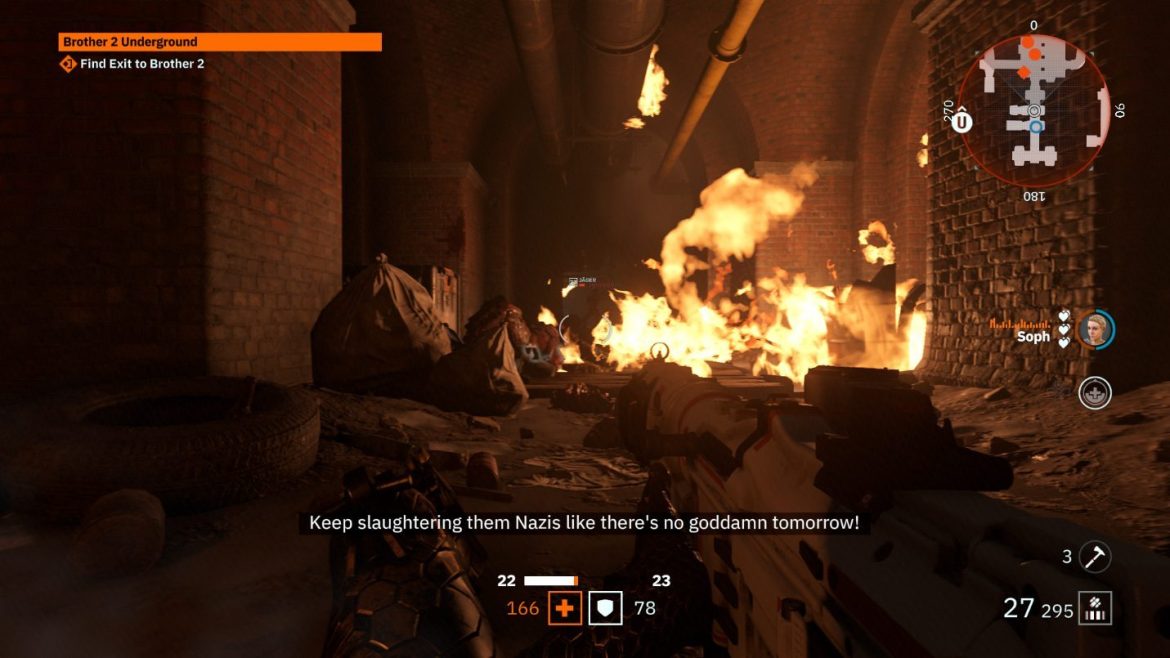
And yeah, it would be good to have day-night flow similar to Metro Exodus, as the eternal sunrise on the Riverside is annoying. After all, we're roaming in a kind of interconnected level environment or separate levels that have no time connection to others?
HUB
Well, is there any need in a Hub, at all? Half-Life, maybe? Well, it simply does not belong there! Quake? Well, probably, the very first location with the world selection could be Ranger's chamber with a collection of things in a style of Memento guy trying to hold to the memories and the meaning of life in these dreamscapes of madness... But all the fashionable decorations are more likely to belong to Quake Champions, and even there a player doesn't have a Hub, though it would be nice to see your favorite champion descending into the irrational darkness of serving the cult of Cthalha, Maykr or Lovecraft Undivided. Doom? Well, let's say that all the Martian base is his Hub!.. Of course, there is a Hub in Doom Eternal, but Doom2016 with the same collecting fever felt perfectly fine with the GUI only, not messing up Doom Slayer and a player progresses and not causing a ludo-narrative dissonance: well, admit that Doom2016 has introduced a totally new character of divine forces that was not so easy identifiable with a player unlike that nameless marine Doom Guy.
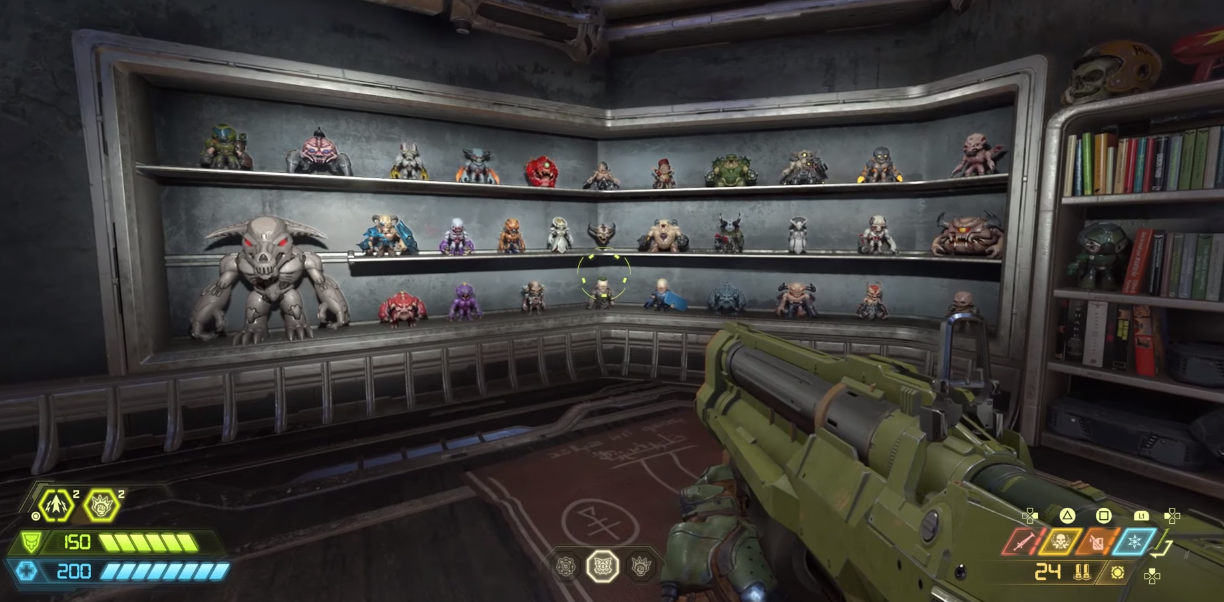
I believe that this Hub trend began with the help of action-RPGs - like, Diablo, Titan Quest, Torchlight etc - when FPS had begun to borrow RPG-elements. As well, I won't be surprised if there are traces of MMORPG influence, as from there a game can borrow all the different social interaction elements. To increase the count of played hours, games now offer a gameplay of not a linear but spiral dynamic, where a player is constantly returning to the safe place. Let's say, it's the raider style gameplay, cut to short sessions.
Previous Wolfenstein games could have replaced the Hub with the cut-scenes without any problem, but it seems that if there is a principle of film-making - "Don't tell - let it show!", then in game-making it was decided to use a similar principle - "Don't show - let it play!". On the other hand, once a pre-shakespearean theaters could have shown a play for the whole day, imitating the reality, but it didn't pass the time test. So, even if a game is made for 50+ hours, a Hub can be simply a time waster. I think the Chekhov's gun principle should be applied: a Hub should fire, be useful, be an interesting part of the game process, and not be the fifth wheel added simply because everybody does it.
So, what a Hub is used for.
FIRST, a Hub is used for a mission selection, sincerely yours, Captain Obvious. But this is too little. For example, in Payday2 missions are perfectly selectable in usual GUI despite the fact that the game contains a Hub. Developers have a choice - whether to load a Hub immediately or the GUI is enough.
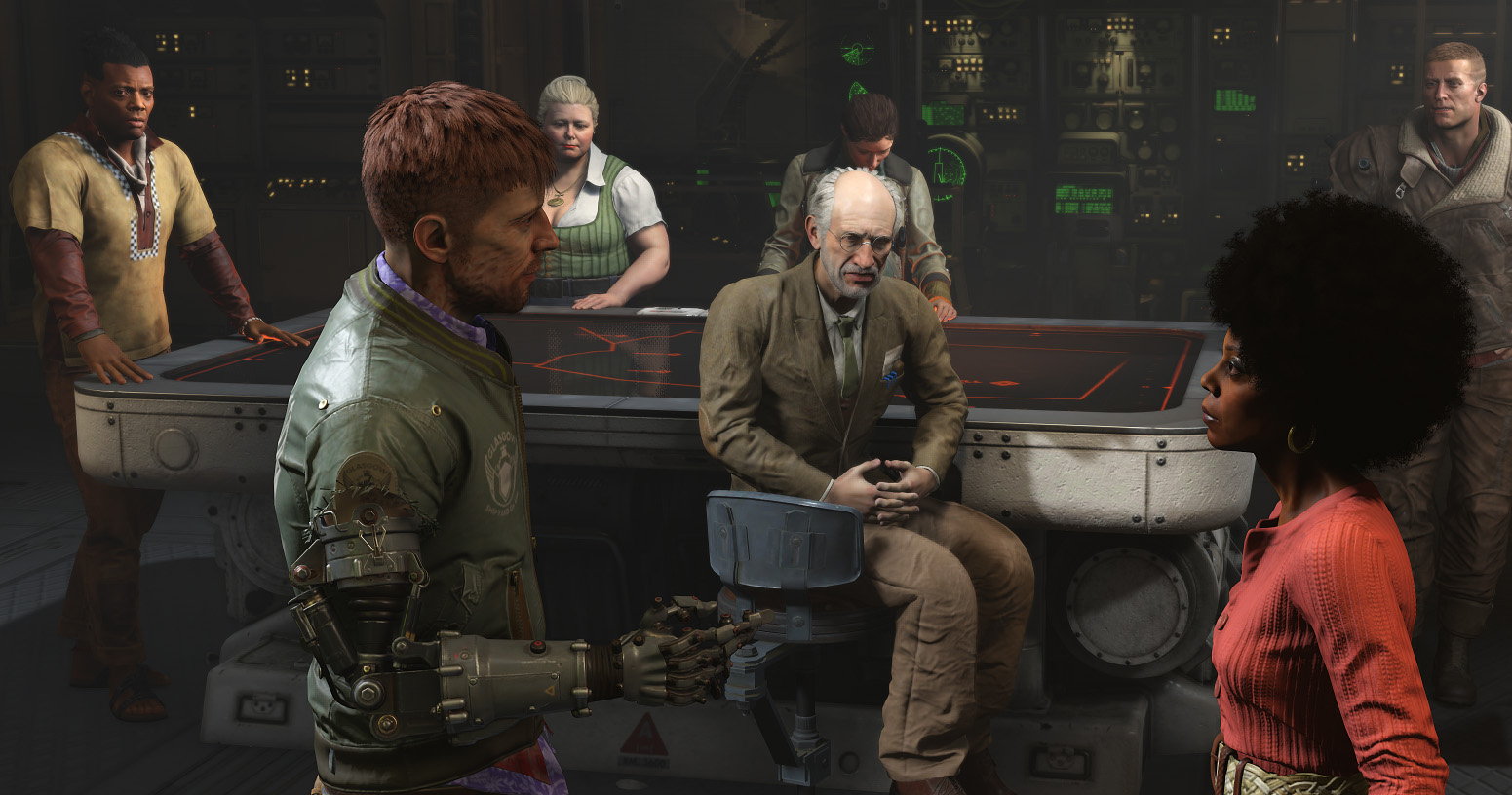
SECOND, a Hub must immerse a player into a game entourage. Like every level, it must tell the story of its inhabitants, what has been happening and happens with them. In Deep Rock Galactic each class's cabin tells a little bit about its dweller; in Payday2 rooms of heist gang members tell about the characters of their inhabitants; and in Wolfenstein there is a life of Kreisau circle rebels. The personages themselves can tell some story, or even be the source of side quests.
THIRD, a Hub should be entertaining. Wolfenstein has arcade machines with the old Wolfenstein3D game; Deep Rock Galactic - the barrel ball game with a beer pong; Payday2 had a casino. A trifle but nice one. For example, in Deep Rock Galactic these mini-games allow to pass the time while the comrades select the correct equipment for the next mission.
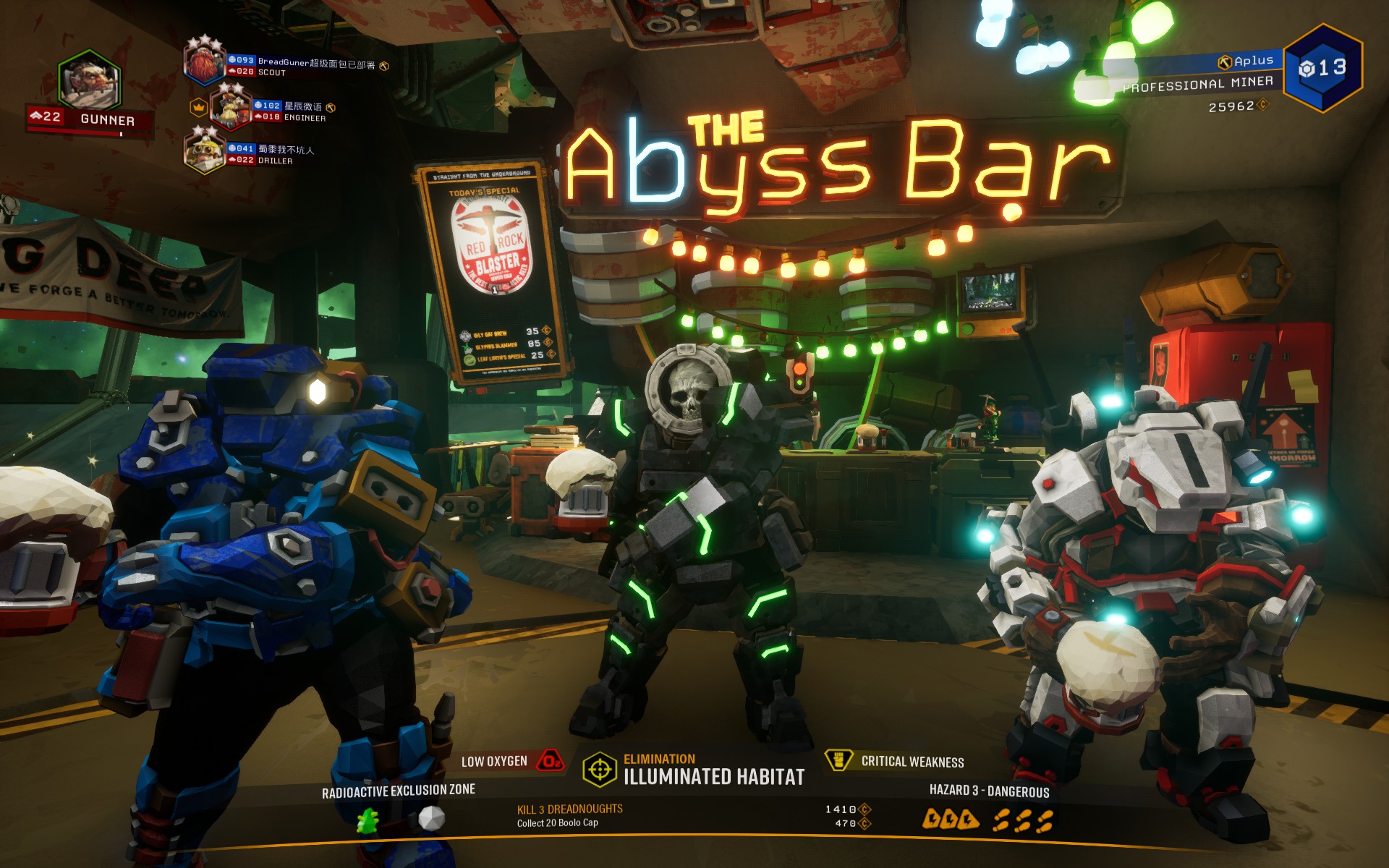
FOURTH, a Hub is a place for a shooting range, weapon fine tuning and player's personage setup (if it's changeable). You can find the example of above-mentioned in Wolfenstein II, Payday2 and Youngblood. In Shadow Warrior 2 there was an immortal demon bound to a crosspiece ("gimp" - this game has a kinky sense of humor) as a weapon test stand; as well, there were trials in a form of arenas available any time. In Doom2016 rune trials, in fact, served as a weapon training, and in Doom Eternal also The Big Arena was added for a bored Doom Slayer. In Warface while you wait for a match, you can shoot some targets, pass some training and so in a safehouse. In general, when a game has modifiable weapons, it's very desirable to have either a basic shooting range or an entire arena with all the kinds of obstacles and enemies.
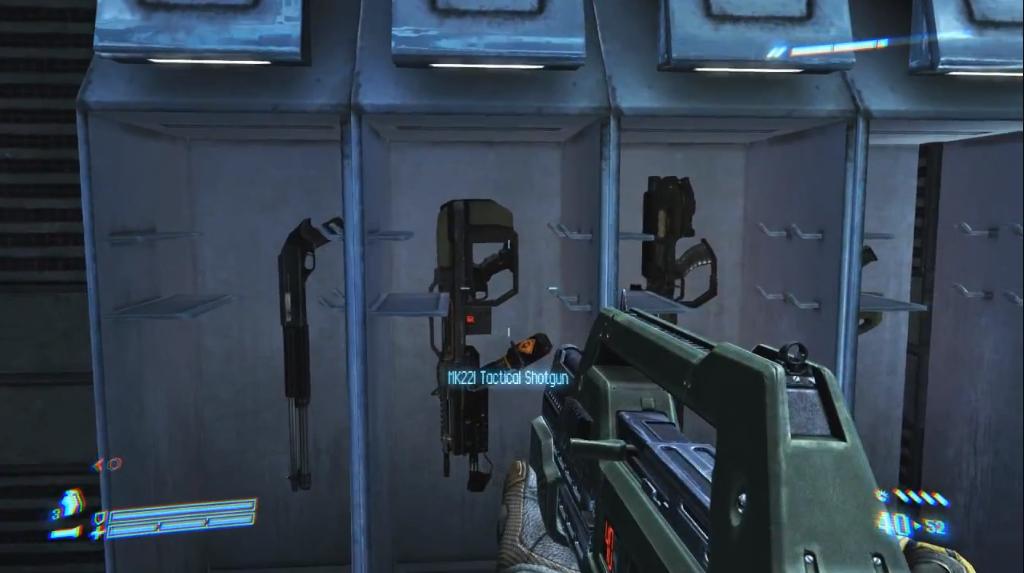
Btw, there is a separate shooting range in Aliens: Colonial Marines. But honestly, there's nothing to do but the very basic shooting, so after you've tried all the trials offered there and have set up all the weapons, there is no big interest to get back there. And that's the pity, as the level designer has input some efforts!.. On the other hand it could have been the idea of this room: shoot and leave, marine! I believe it's somewhat wasted potential for a potential Hub there, with a chance to see the interior of a Sulaco-type battleship - at least, in a scale of a similar level in Quake4…
FIFTH, a Hub is the place for displaying a player’s game progress. A Hub should change along the player, somewhat similar to the Room of Silent Hill 4. These changes could be conditioned by a game plot - for example, some additional NPC appearance, or getting an access to previously unavailable locations; or these could be of a collectible type - toys, music, concept-art etc, see Doom Eternal; and these could be the result of a player actions - in Payday2, you can buy for a special in-game coin currency the upgrades for heister rooms. Thus a Hub turns into a modifiable object that a player would want to show off to the other players! Joining them feels like coming to another's home, thereby players can virtually satisfy their need in socialism, oops, I mean, socialization.

All in all, “Hub as a character” conception development imparts both the time in-game, and monetization opportunities, and can turn a Hub into Tamagotchi kind. So, if a player would be allowed to build his own base in a style of survival games - I don’t even know, for example, Fallout4 with Dungeon Keeper and Minecraft elements - then it would be possible to get stuck on your dream base construction for a long time. And if we take a look back on the idea of Youngblood’s procedurally generated Paris catacombs, and enlarge it onto creation of a player’s unique shelter?.. And yes, if we take a look at Fallout Shelter management system then the correct NPC presence can be tied to availability of the certain zones: without the medic you won’t get an infirmary, without the gunsmith - ammo, etc. Well, similar to Payday2, where without a certain gang member you won’t get his decorated living room, although they are quite useless there, unless you want to solve the secret quest and find the secret ending…

SIXTH, a Hub is a battlefield. Sometimes it's storywise, for example, Wolfenstein I-II, Doom Eternal or Shadow Warrior 2, and sometimes it’s repetitive mechanics: in Payday2 safehouse raid is the way to show off your possessions to the joining players. Of course, not all the Hub is open for a battle, that’s why the unavailable rooms are at the end of the upgrade queue. But if we take the same survival games ideas about the base construction, then a Hub could be not only the achievement showcase, but the Tower Defense itself, especially if some various deadly traps are added, in a manner of Orcs Must Die.
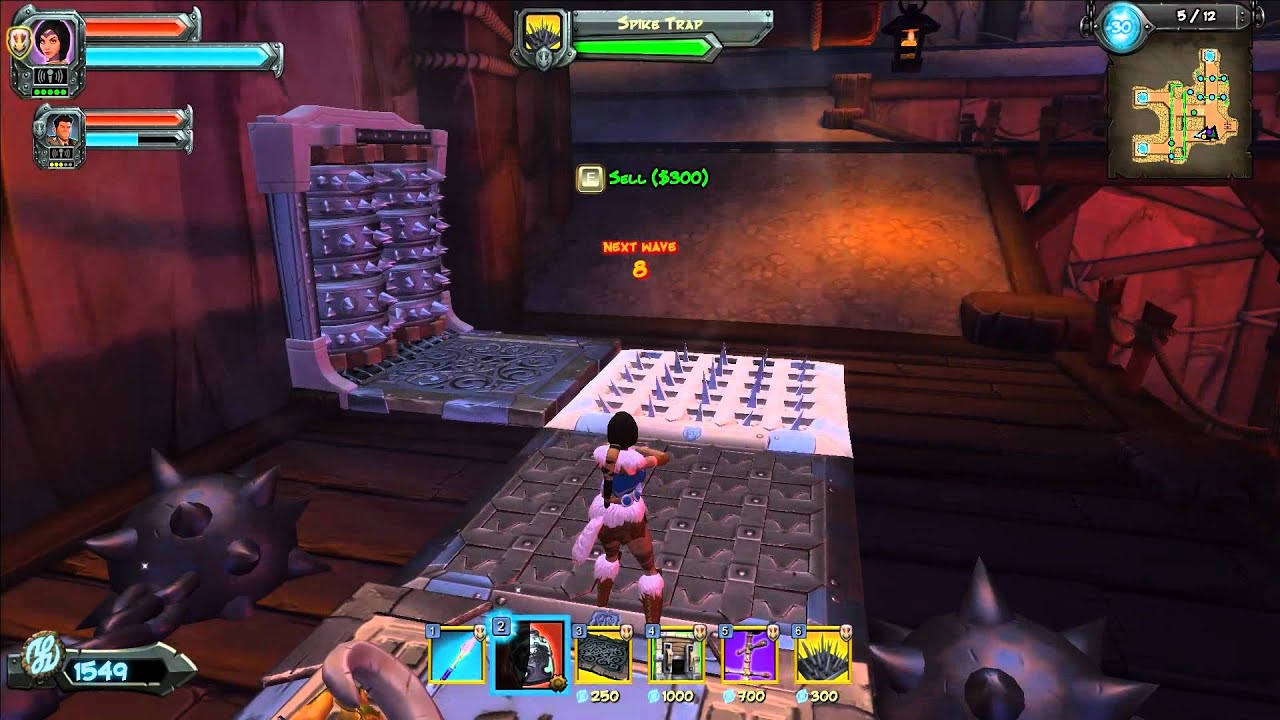
And if a game can generate new NPC’s, then after the main plot completion it would be scary to get rid of the old ones. In Payday2 you have a possibility to arm your AI teammates; if we dig a little bit further, in Jagged Alliance 2 there was a possibility to hire mercenaries and train town militia. That can be developed into the Hub self-defense system, with a possible NPCs deaths that would affect their responsibility zones status. To warn deaths, Banner Saga wound mechanics could be used: at first, NPC won’t be killed but moved to infirmary, and only then, if a fighter with wounds not healed catches a bullet in a battle, it will be his last.
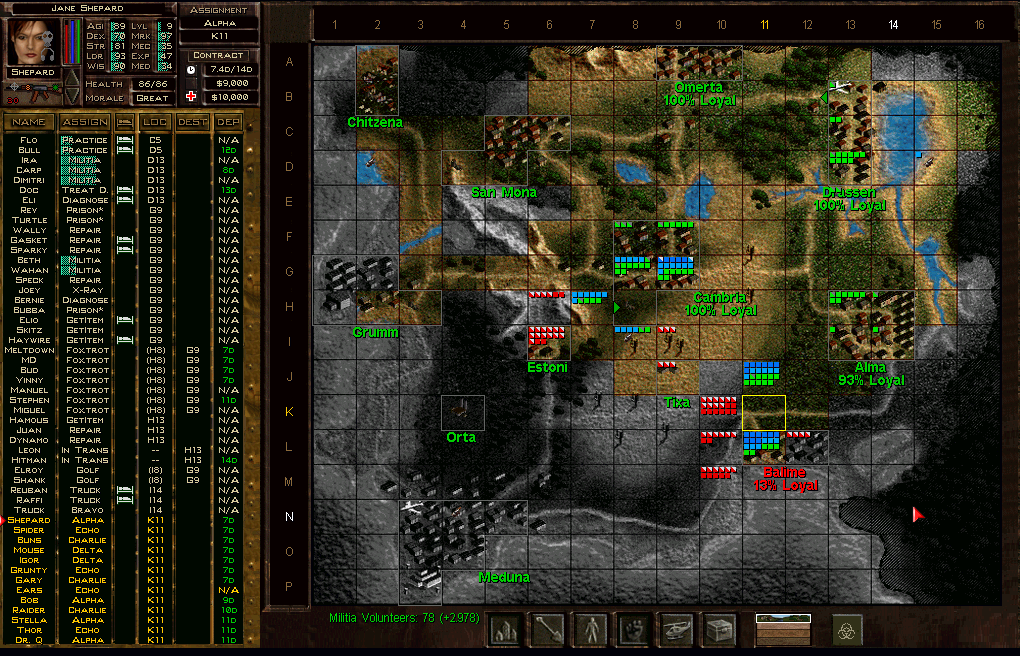
Besides, the Nazi raids can justify the need to leave the place uncovered and to build a new base from a scratch, especially if the previous planning appeared to be unsuccessful, of course, not without the small penalty. As well, if the base map will be generated, it will stimulate a player to re-explore the Hub.
OUTRO
Of course, we must understand that this kind of advice is more dedicated to Youngblood as a co-op shooter, a game planned to be played for a long time, updated and so on; if we look at Youngblood as a classical shooter with purchasable skins then a lot of above-mentioned mechanics will be excessive and distracting from the core mechanics, plot, whatever. The finalized set of mechanics should be chosen upon the accents decided by a game designer. Probably, a lot of ideas are quite utopic, but anyway, that was just a brainstorming.
But that’s not all: I’ve tried to use the analysis of Youngblood further on two examples. The first one is purely an abstract game concept. And the second one, is a game mod concept, which differs with more specific mechanics already existing in its original game thus making things easier if a modder just uses them and more complex if a modder wants to make radical changes. Let's see.
